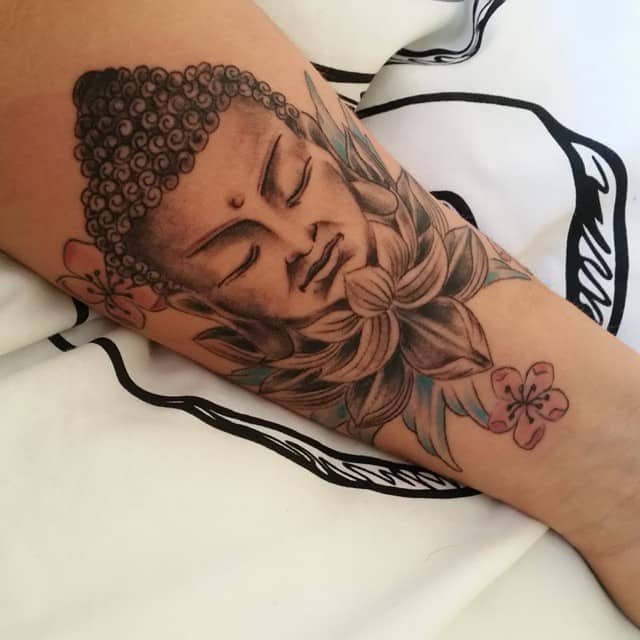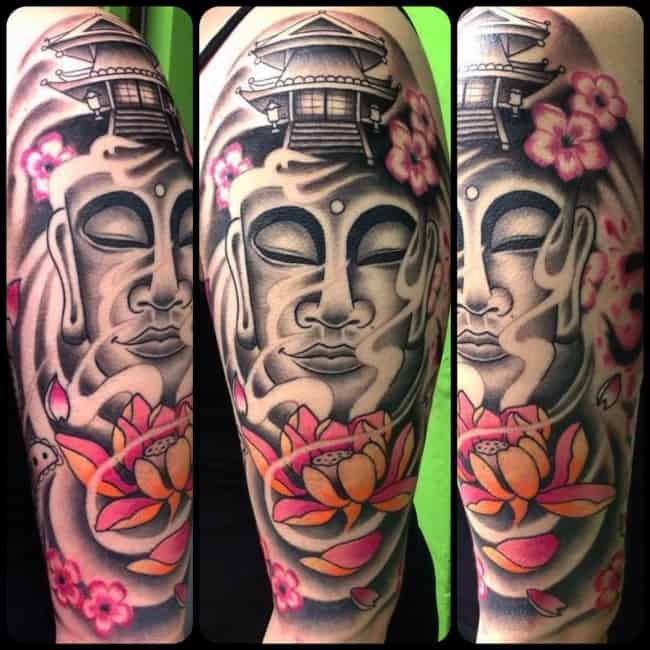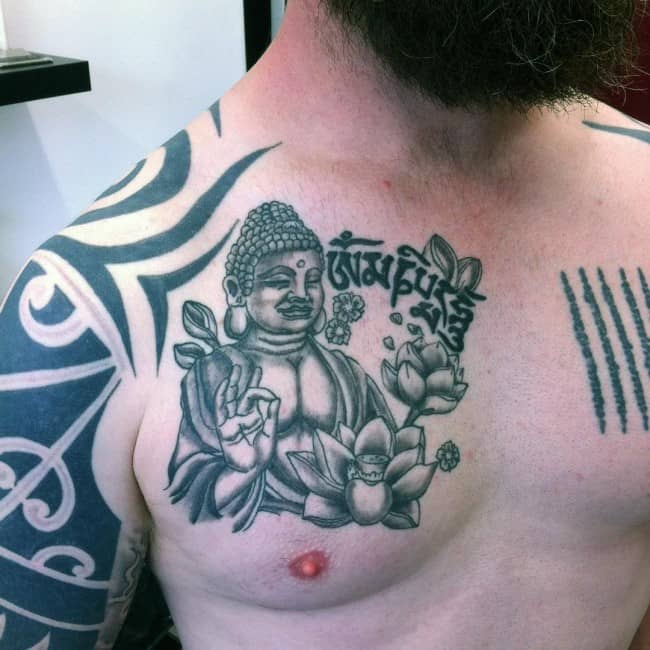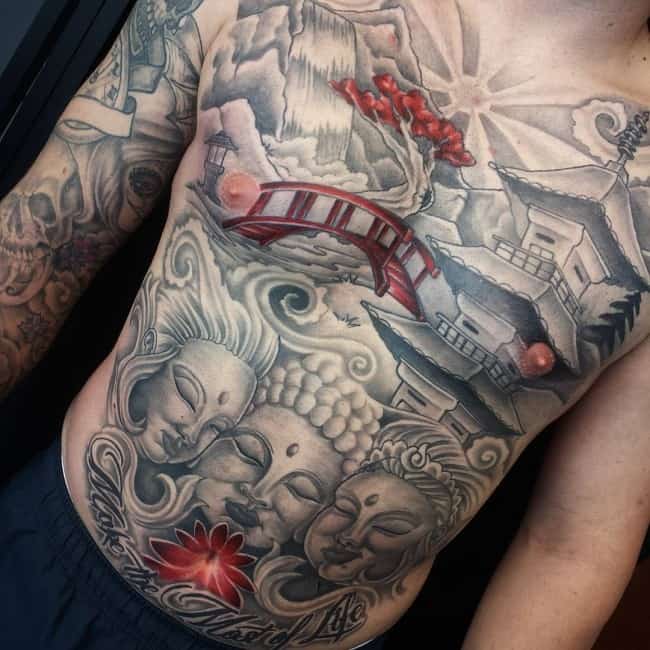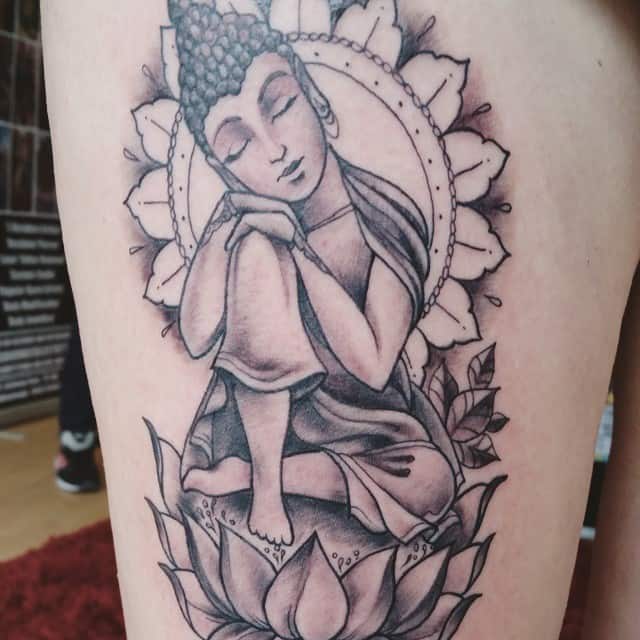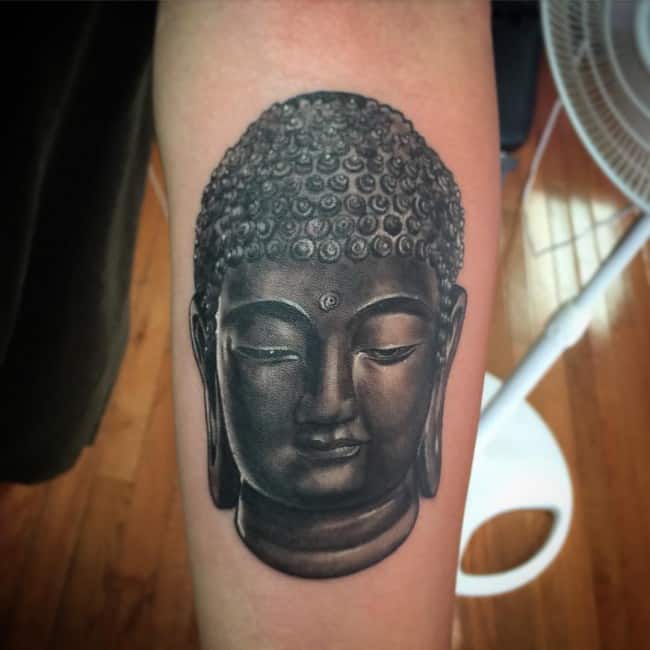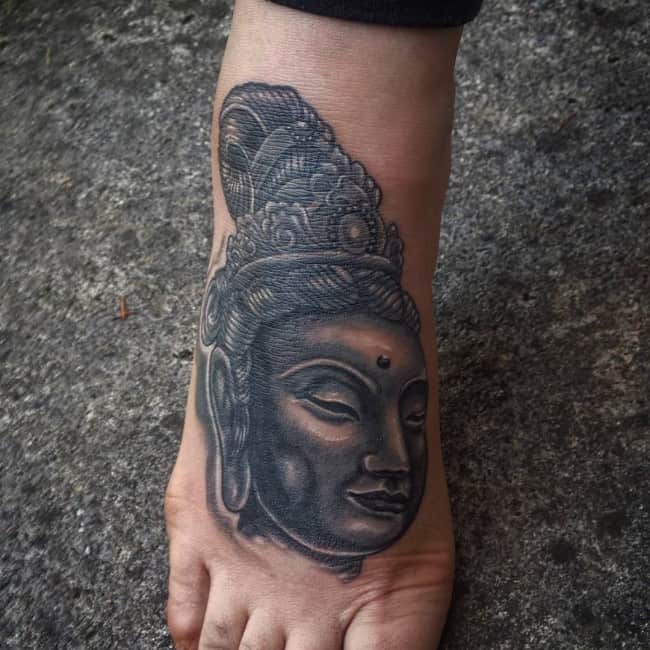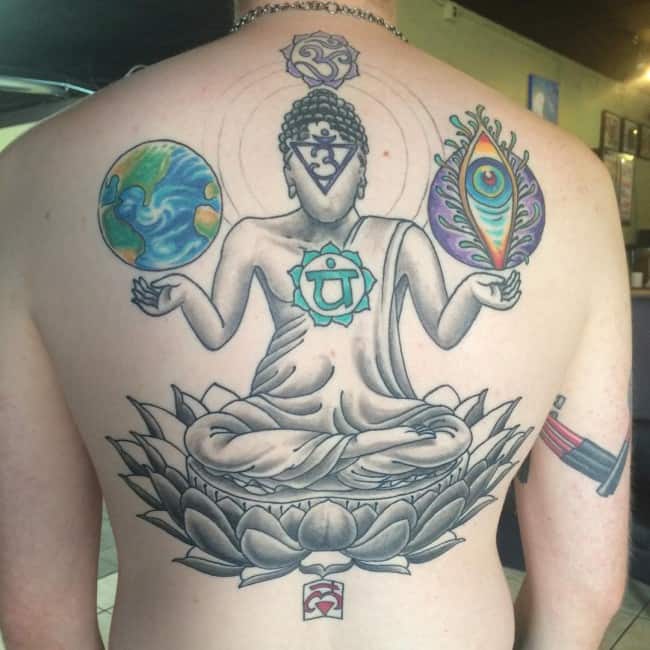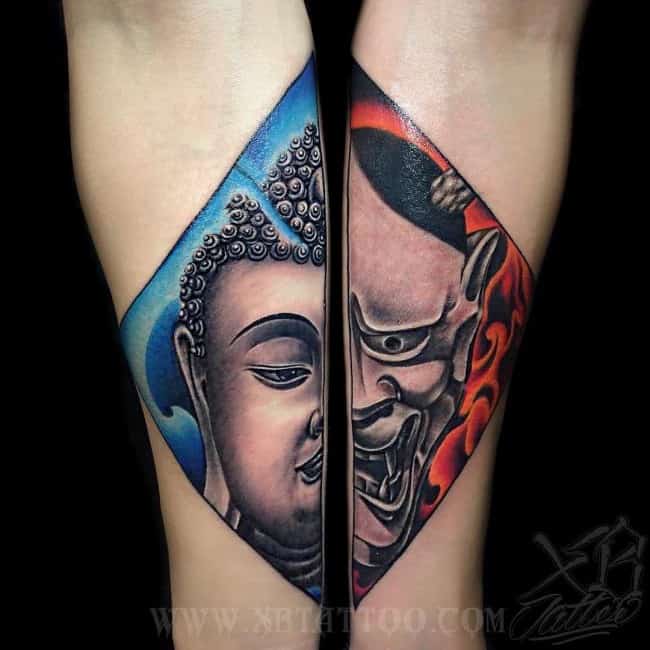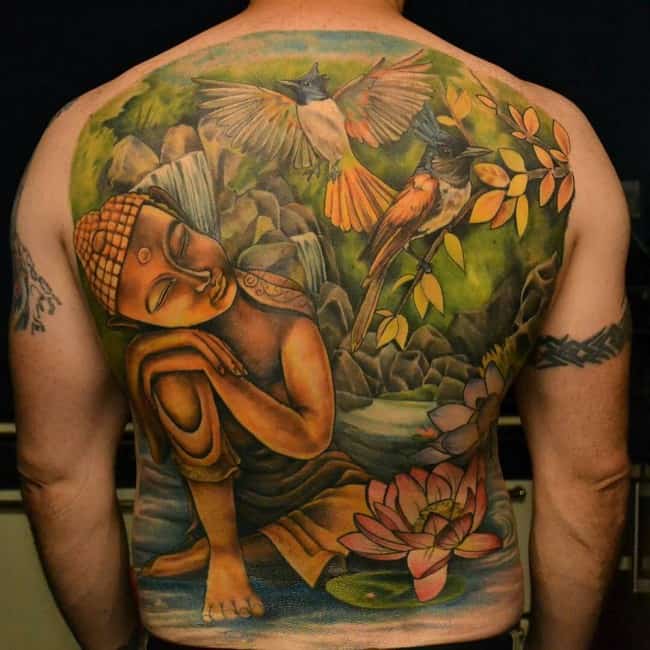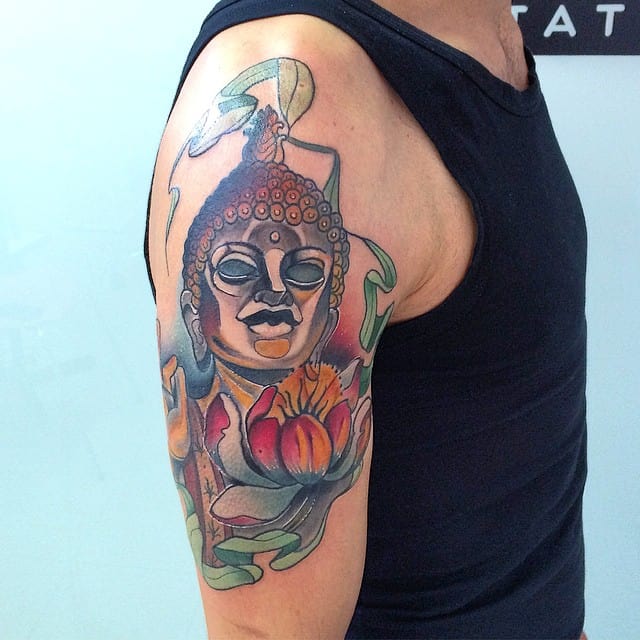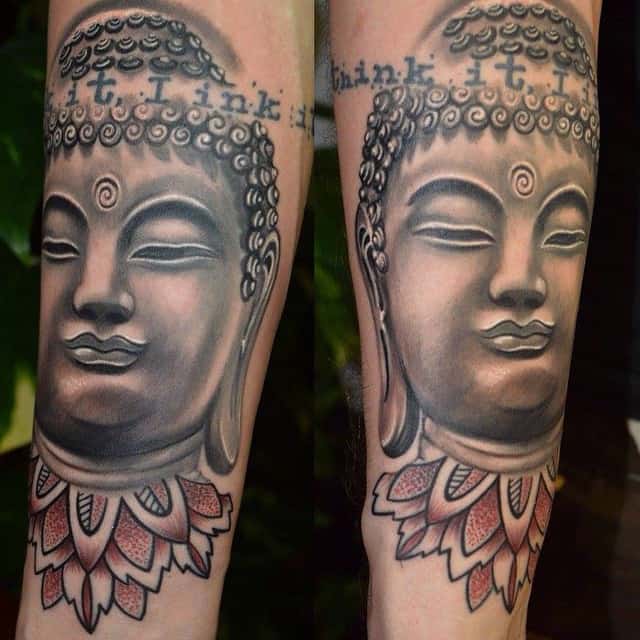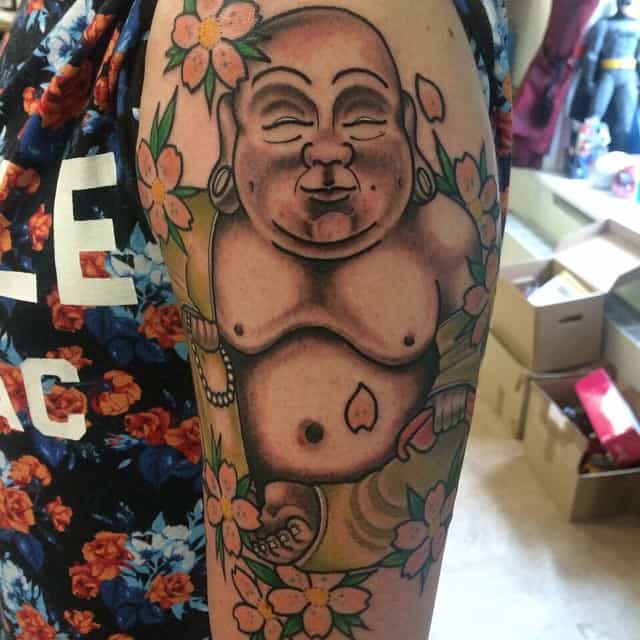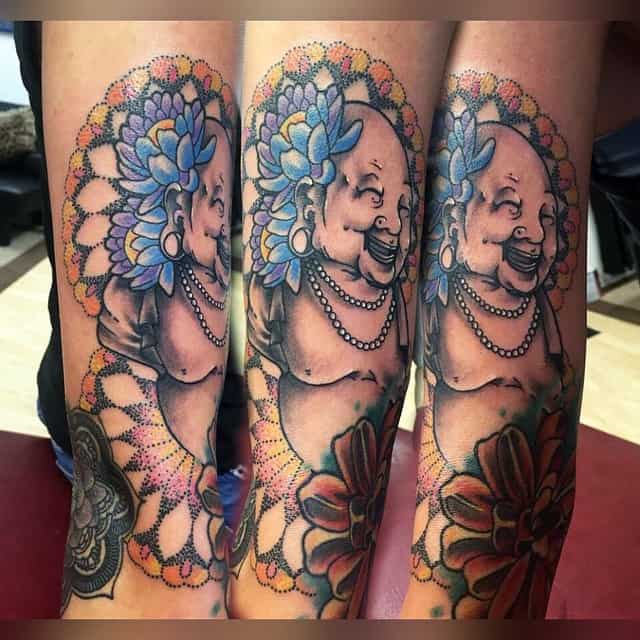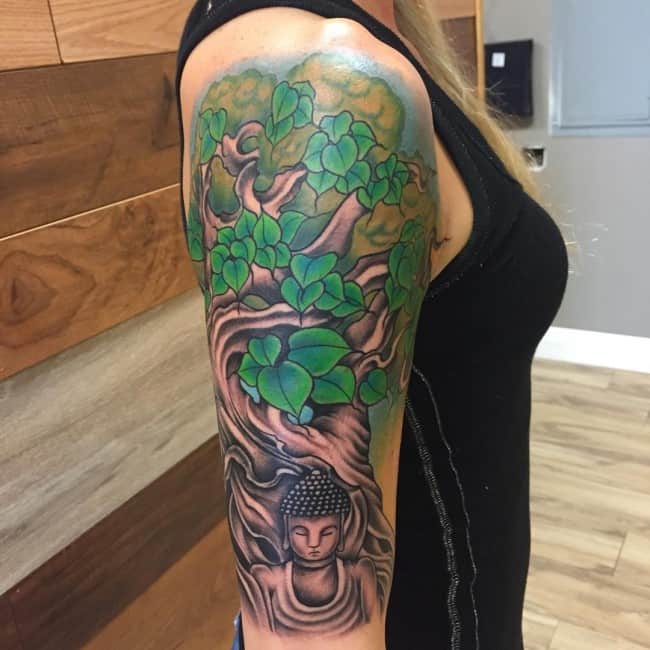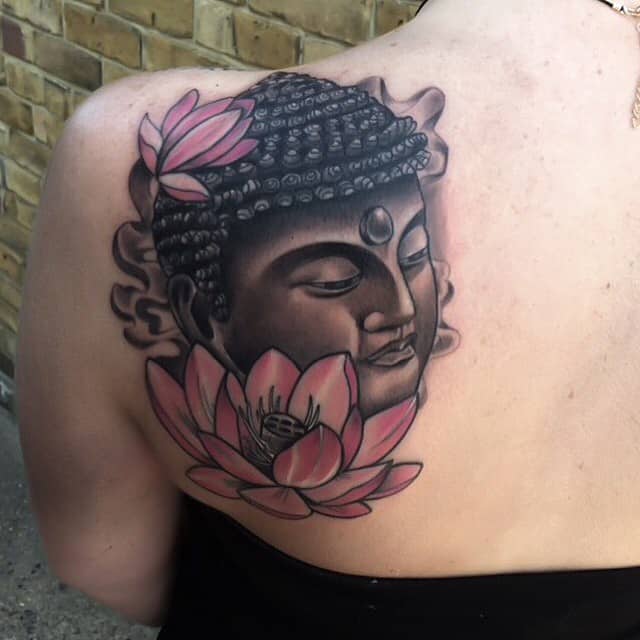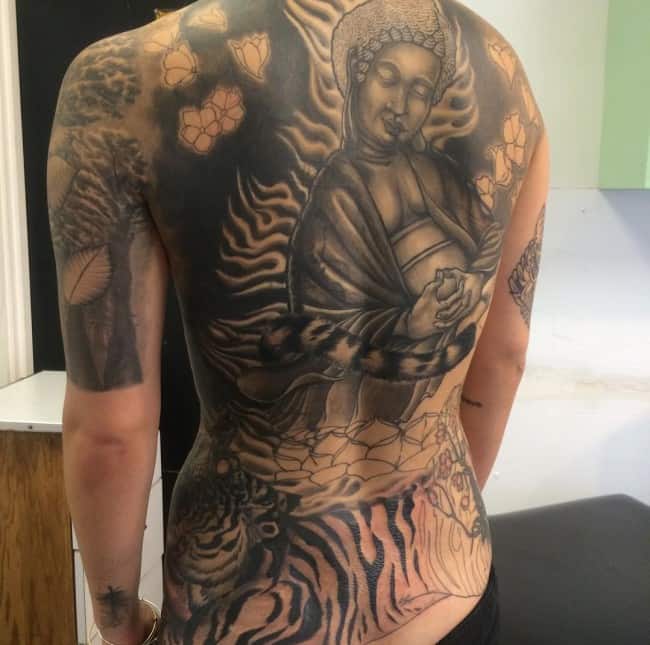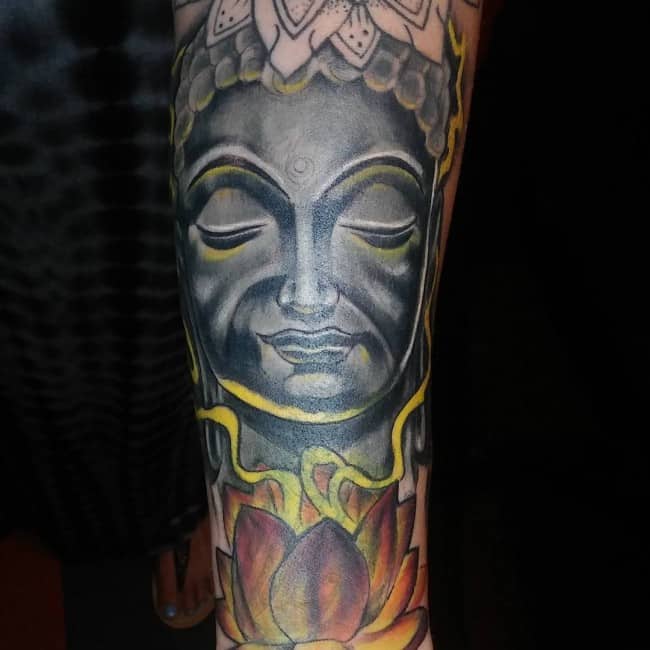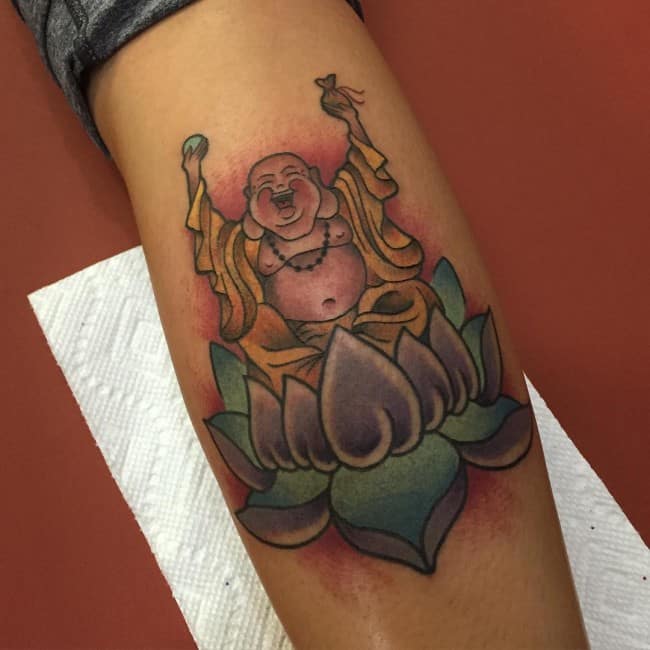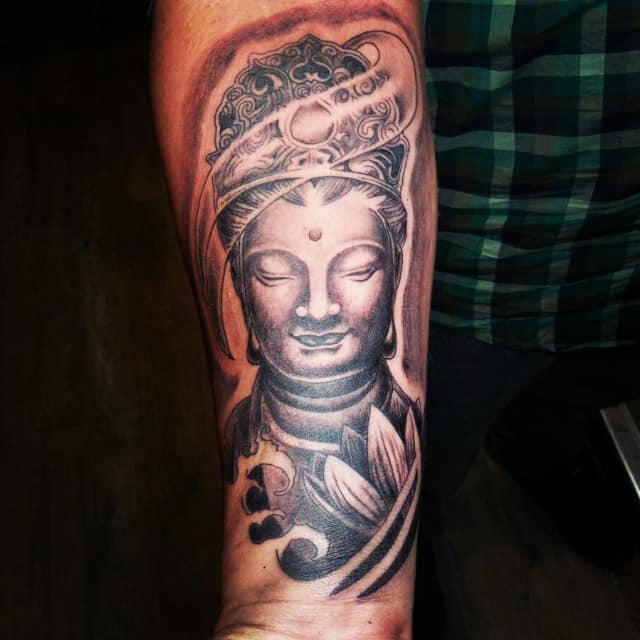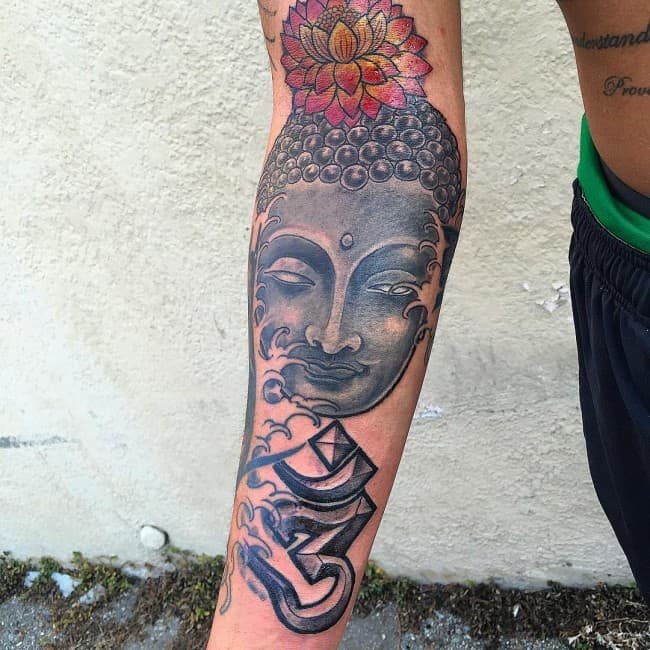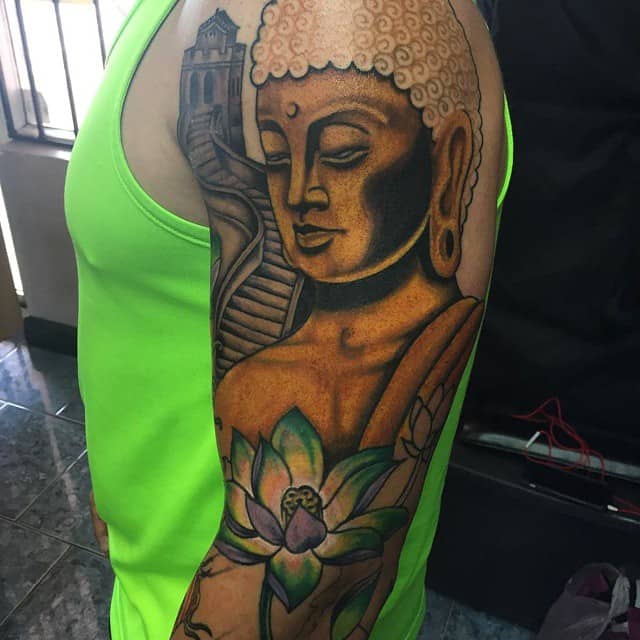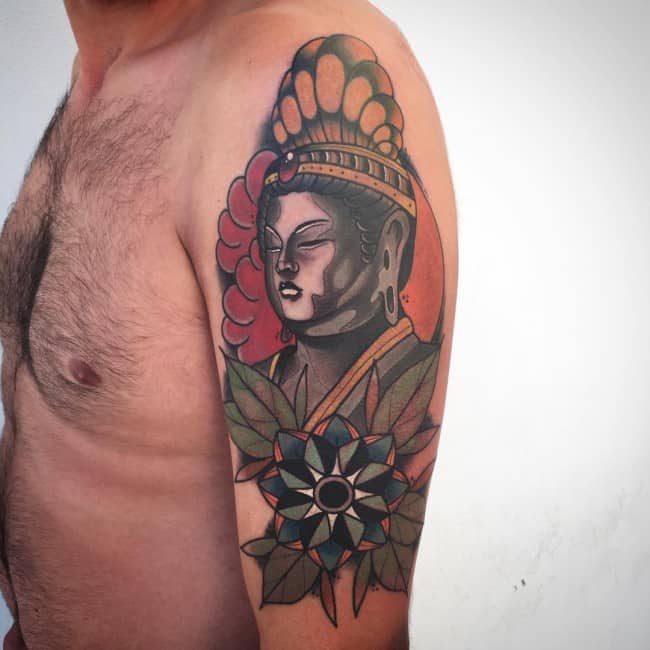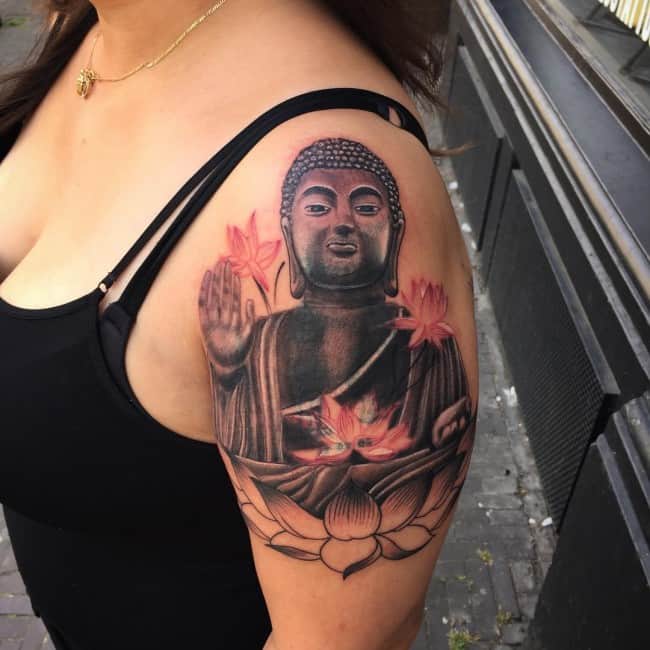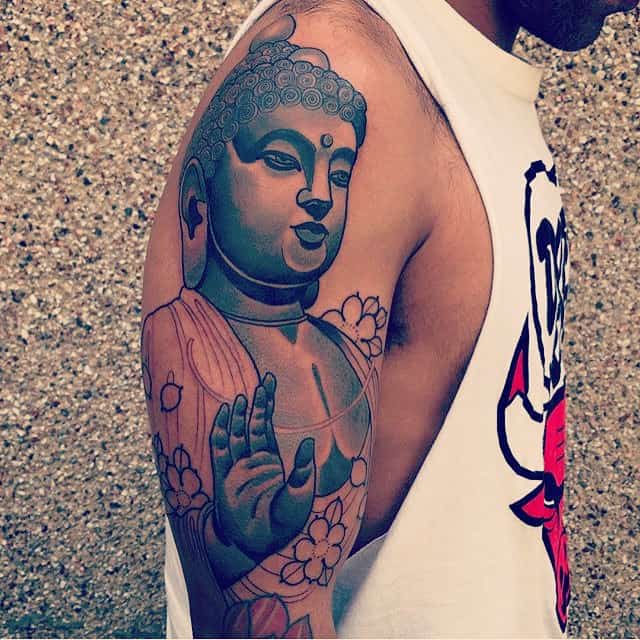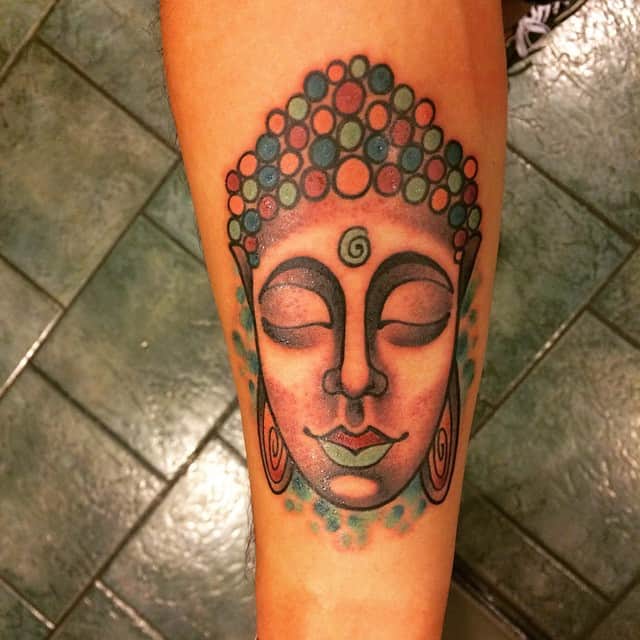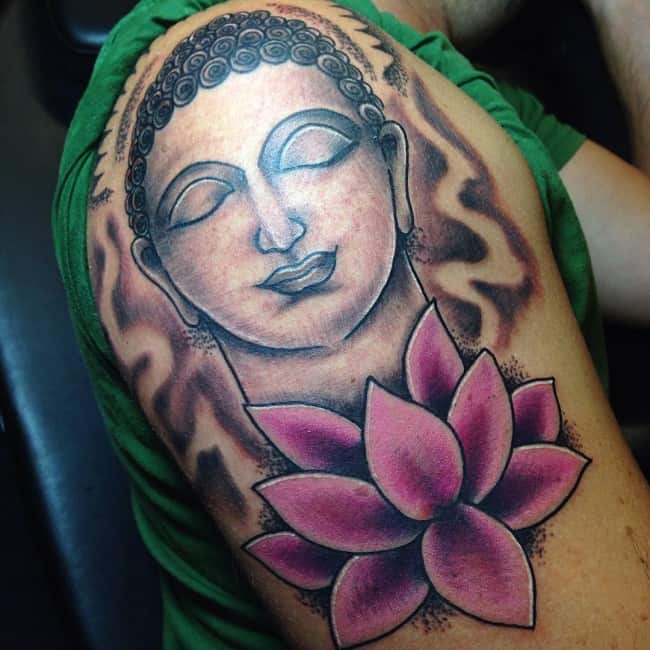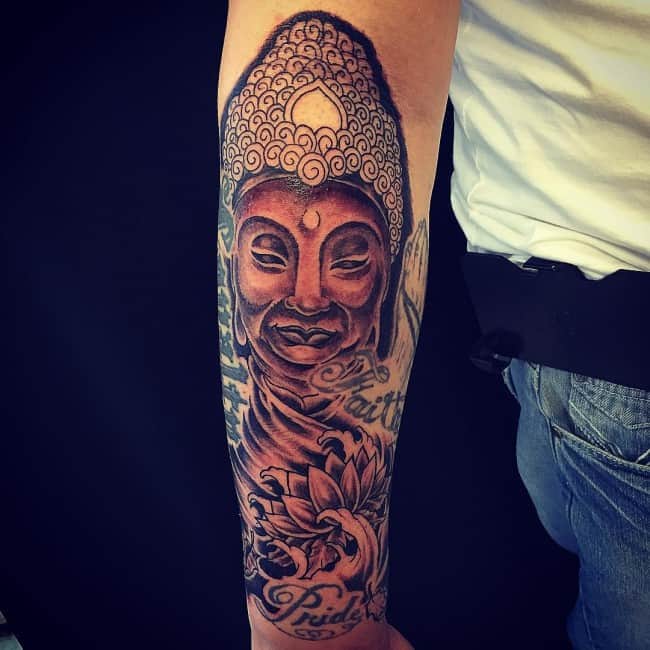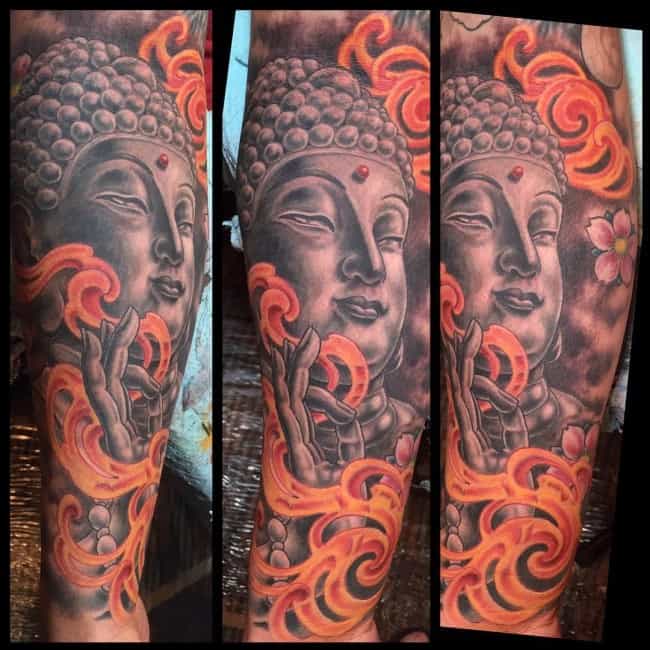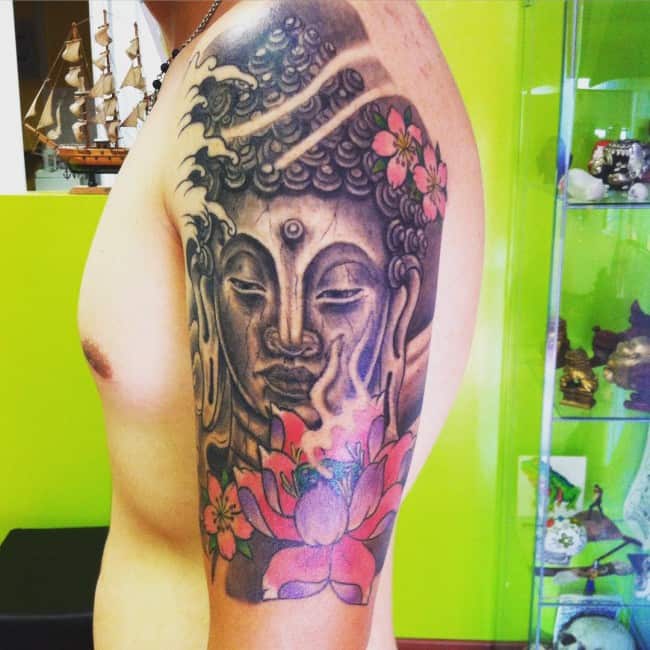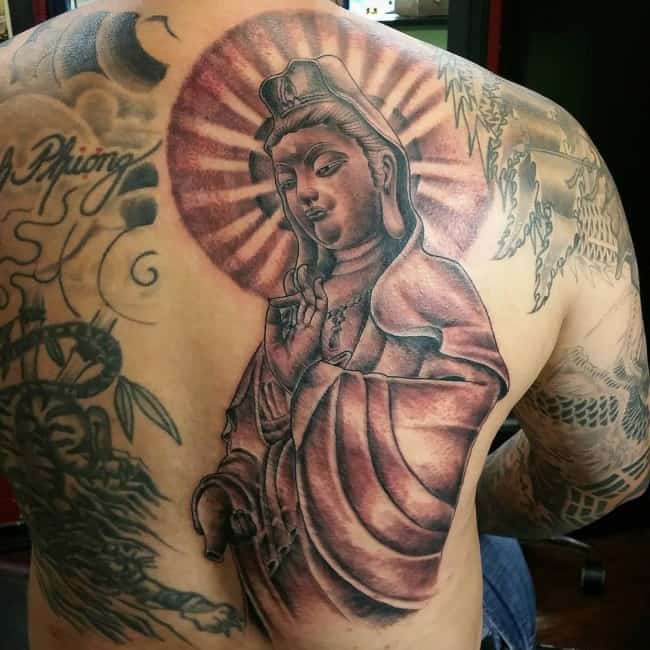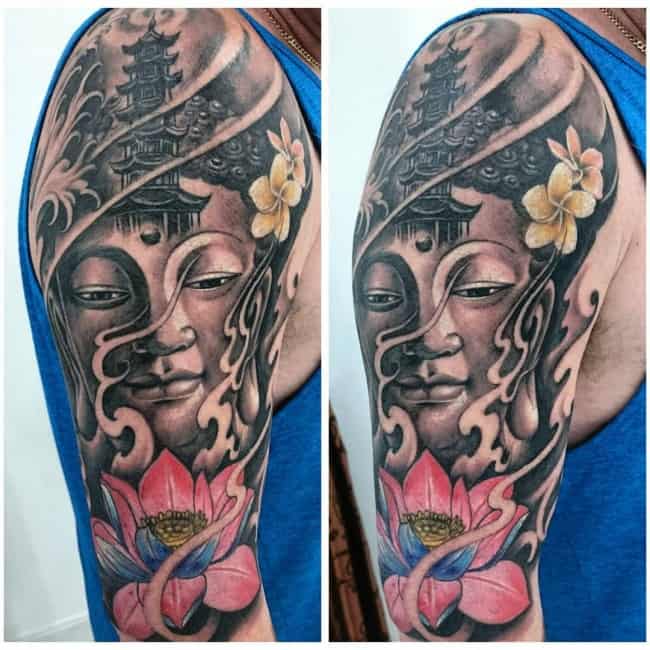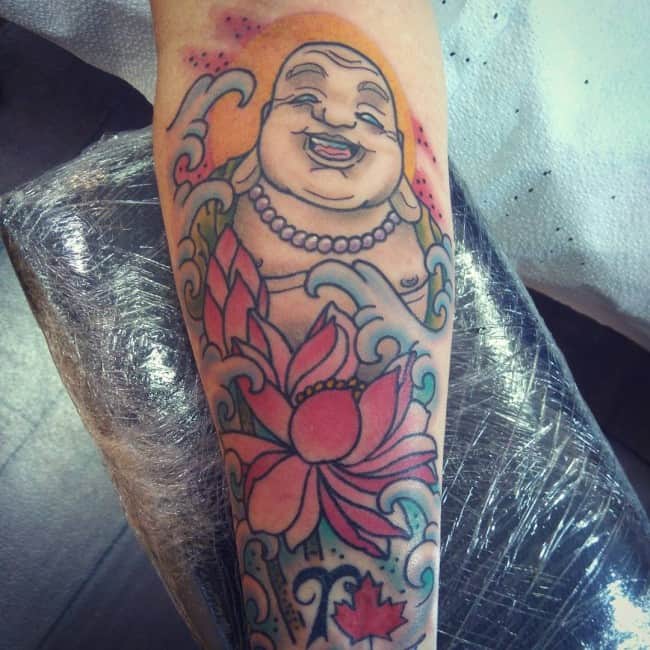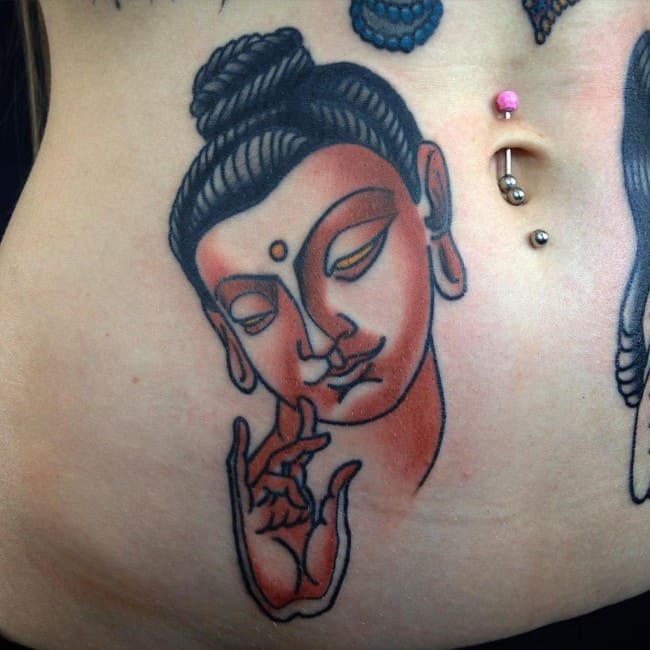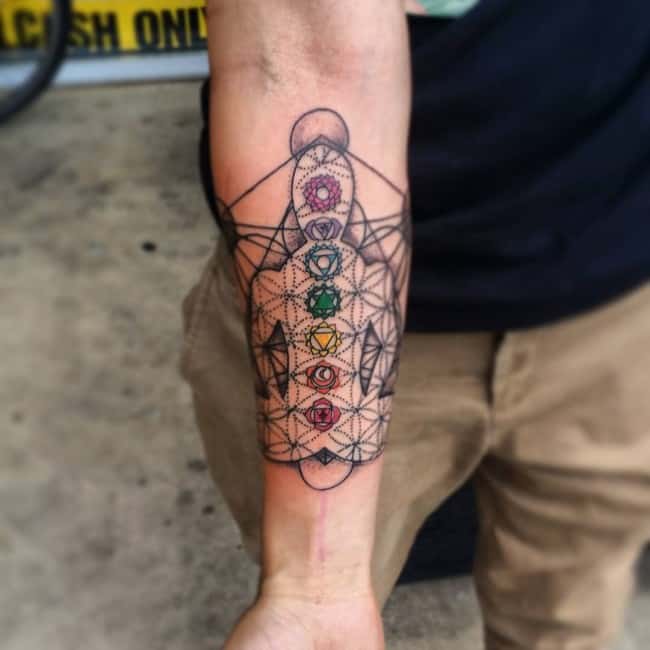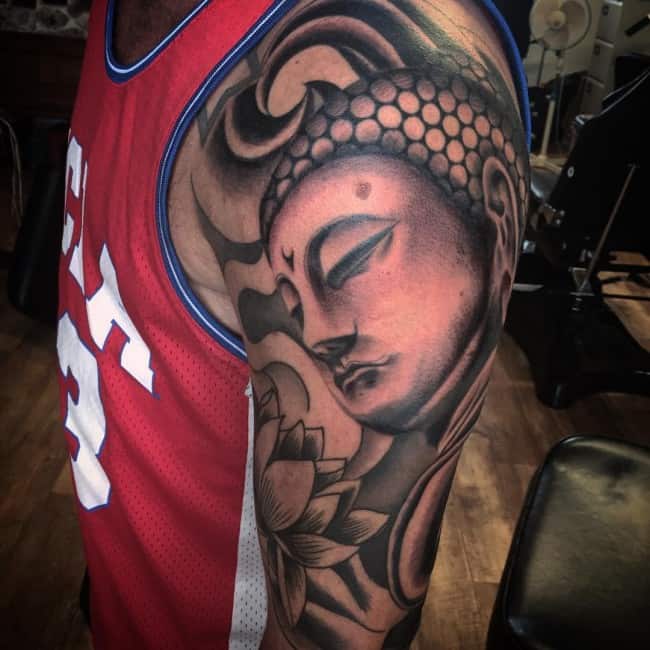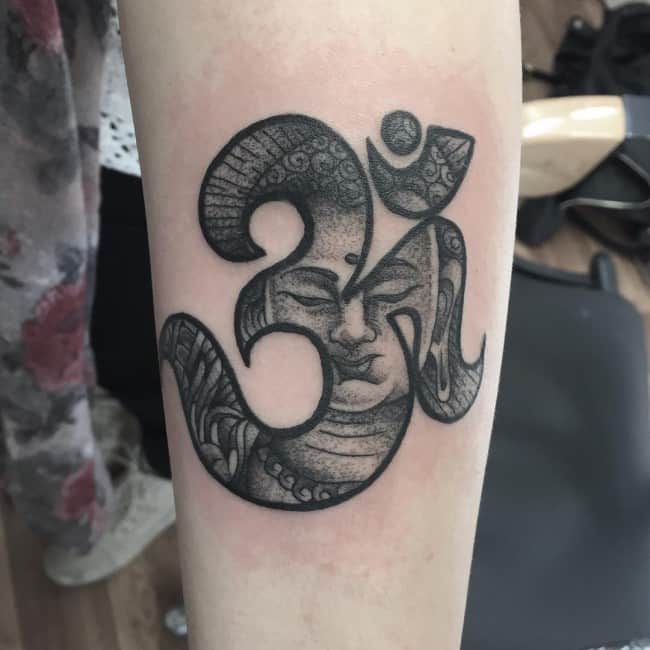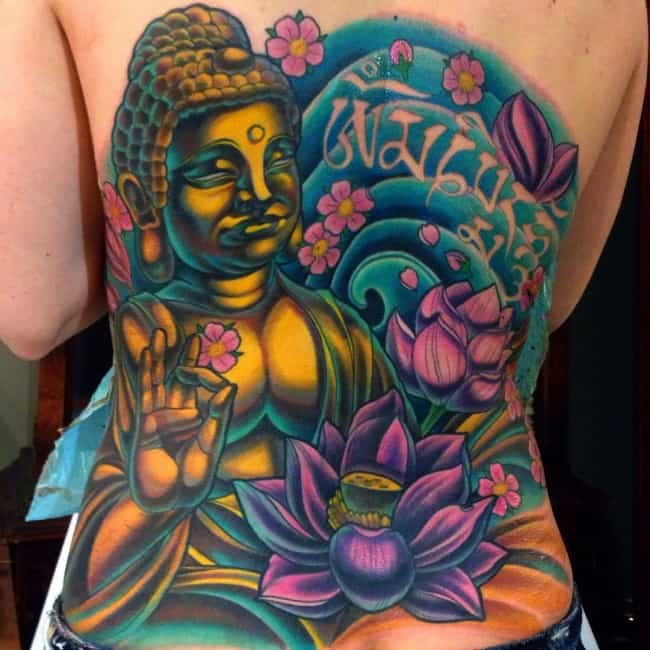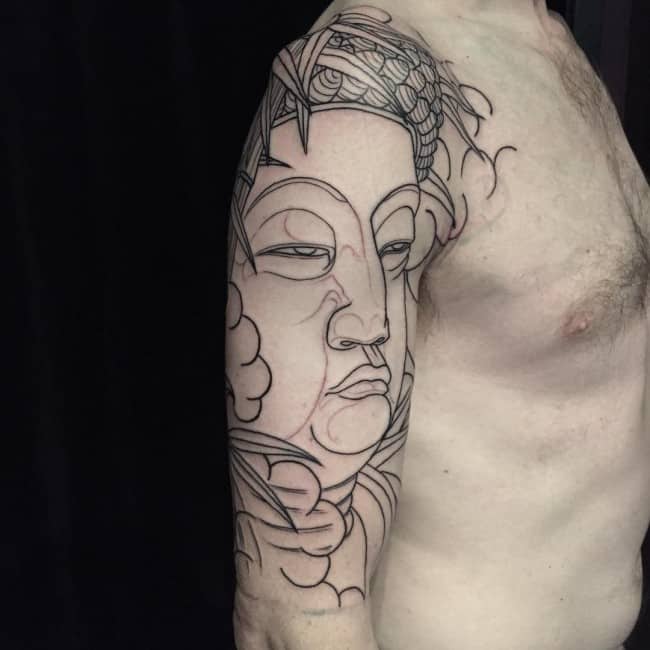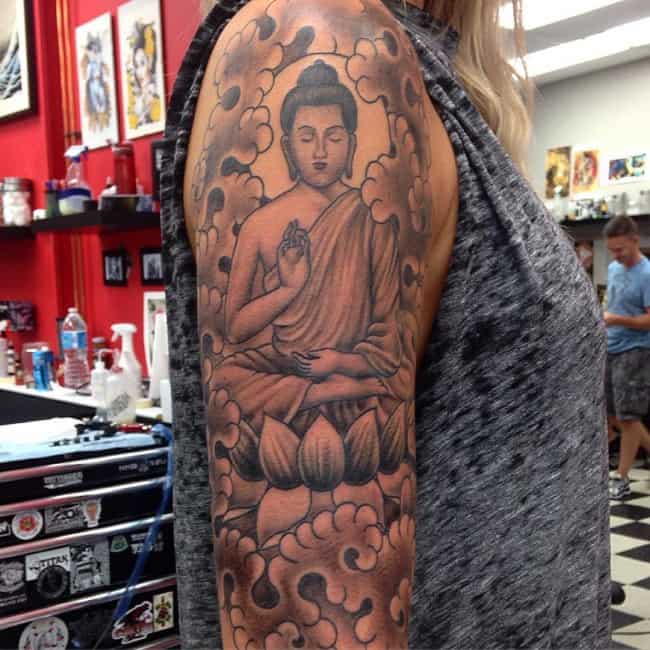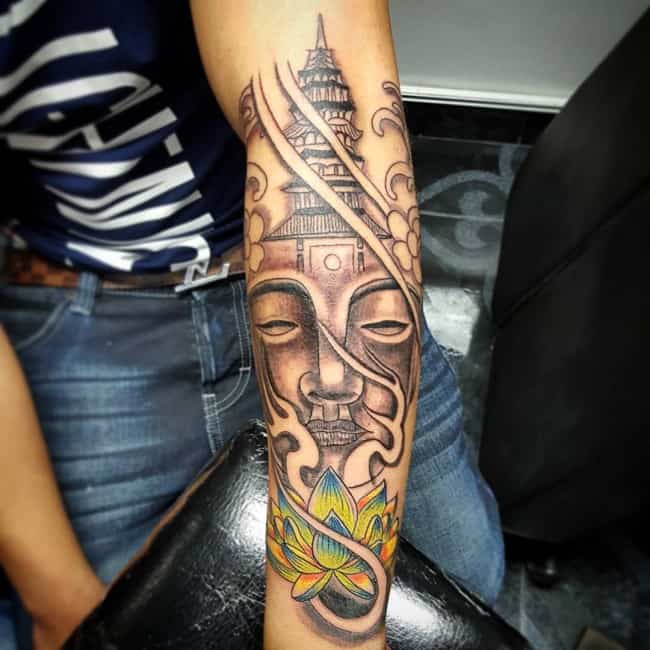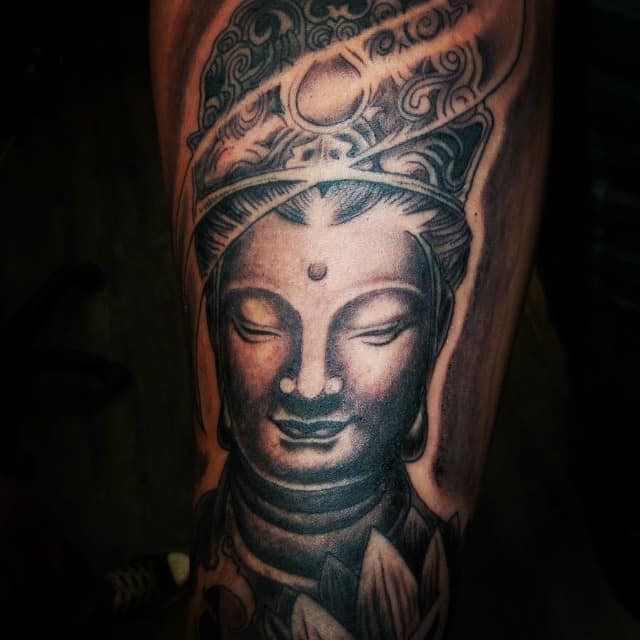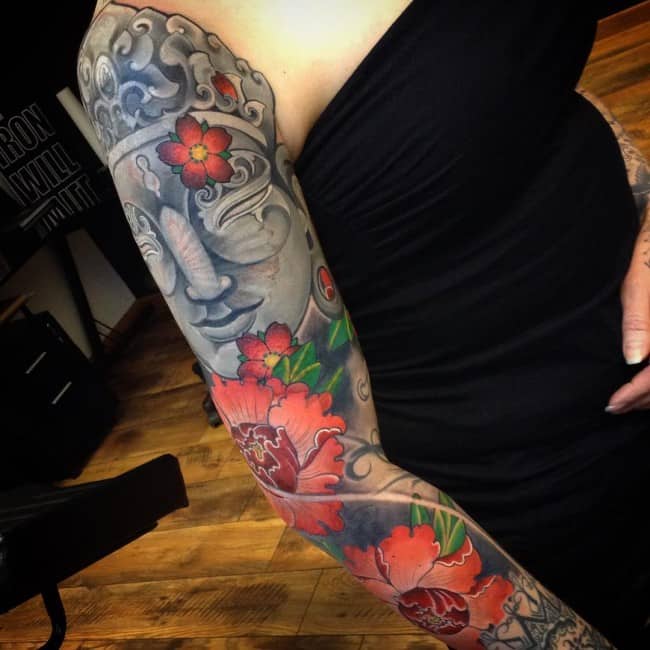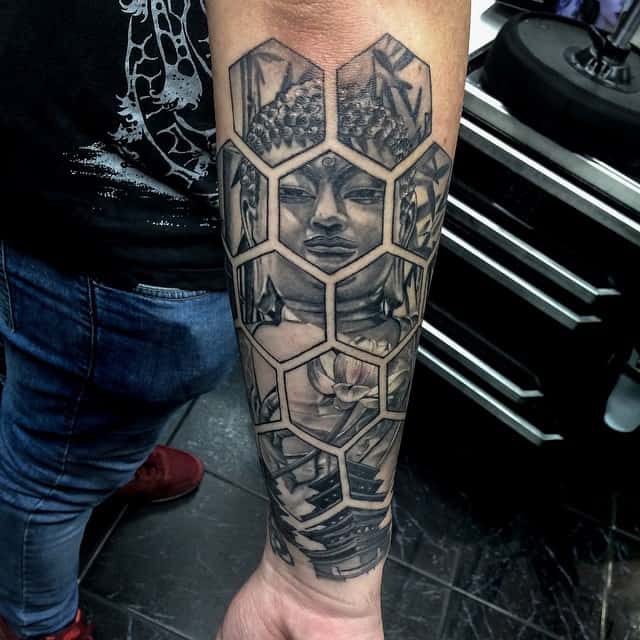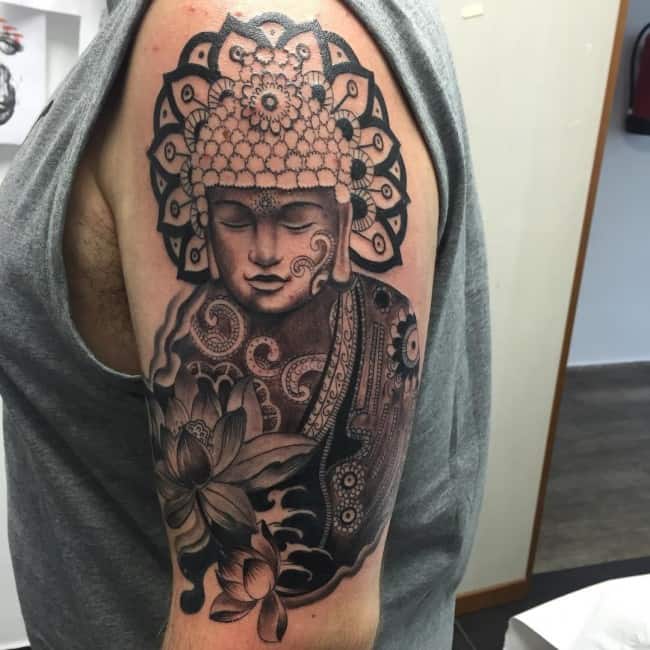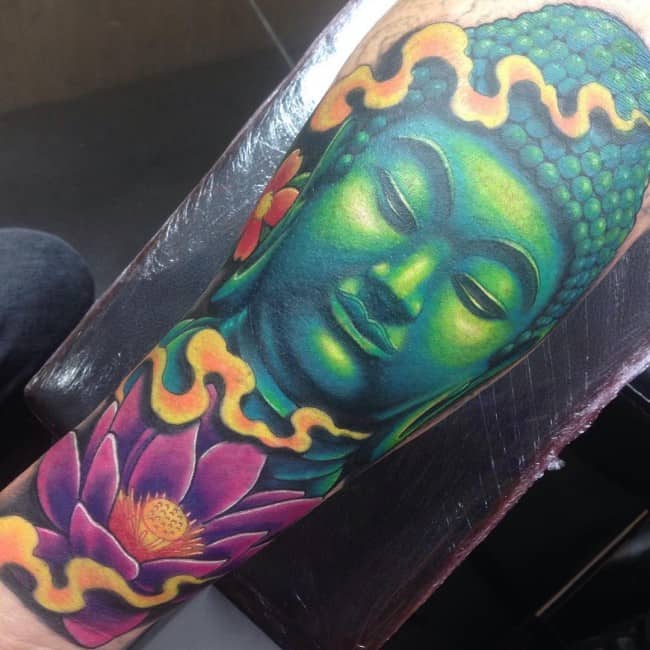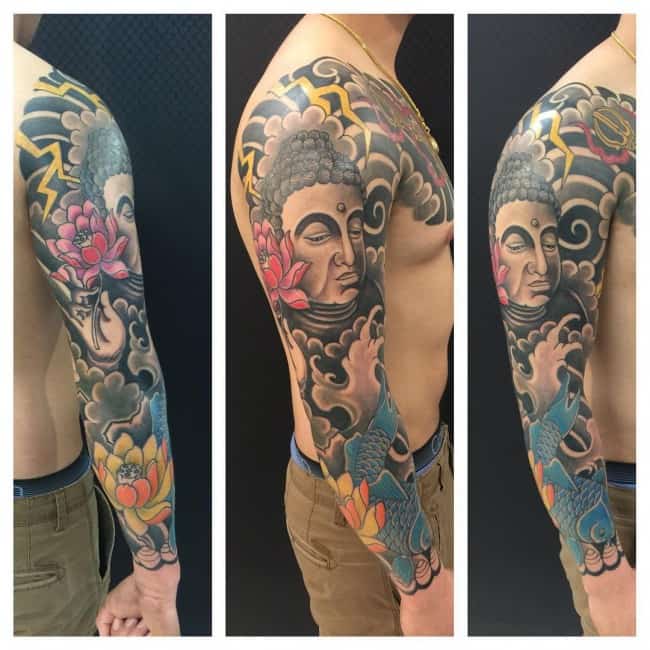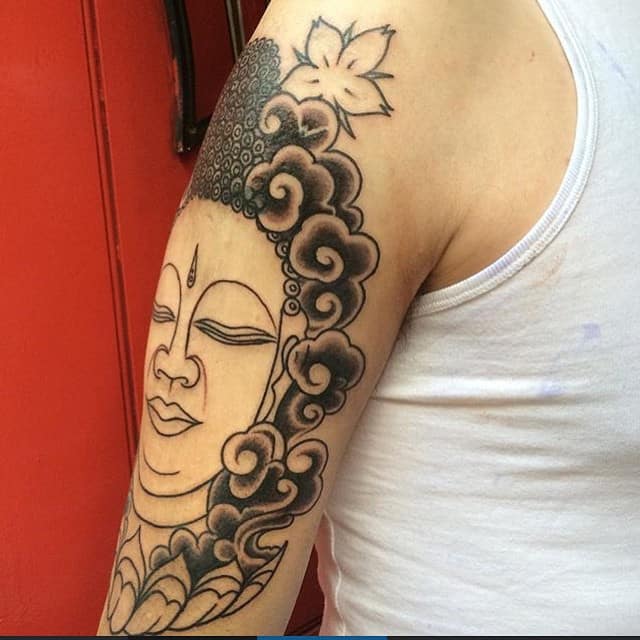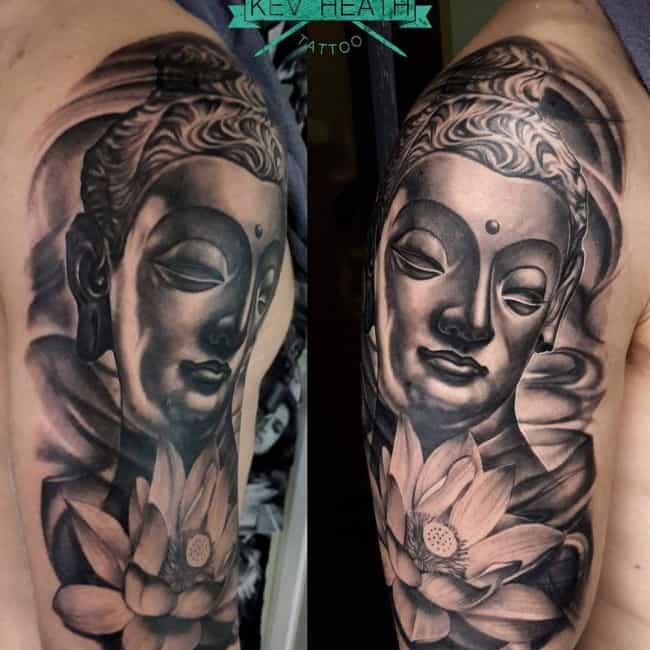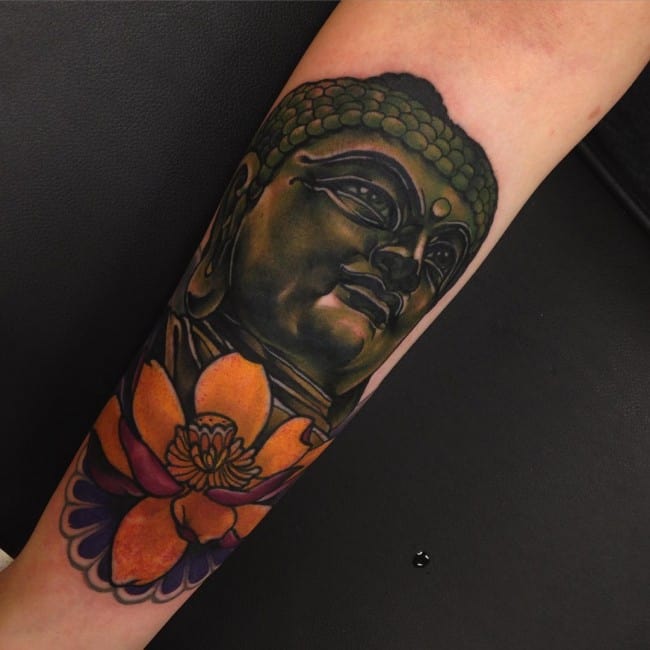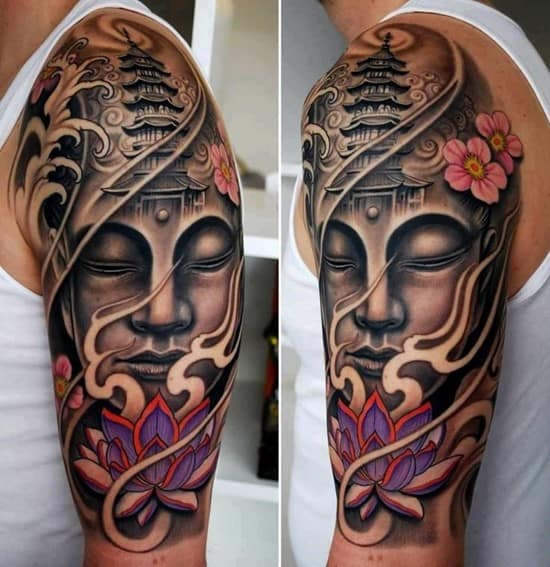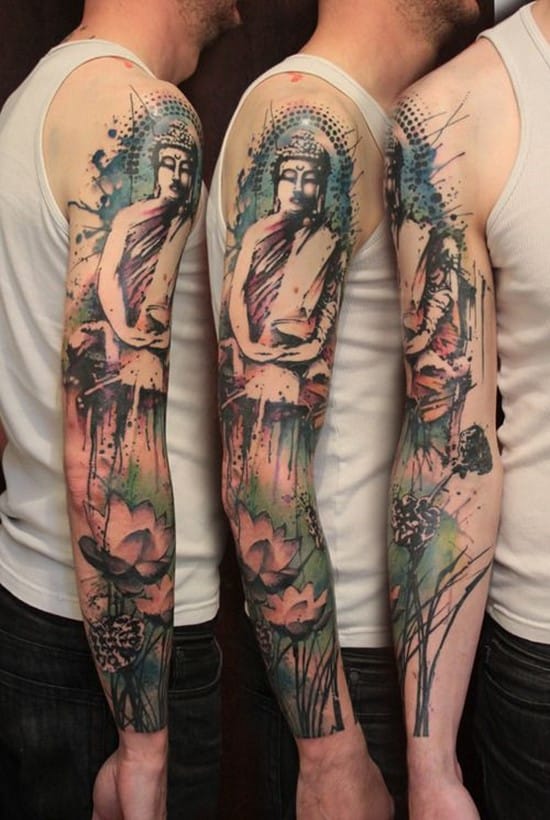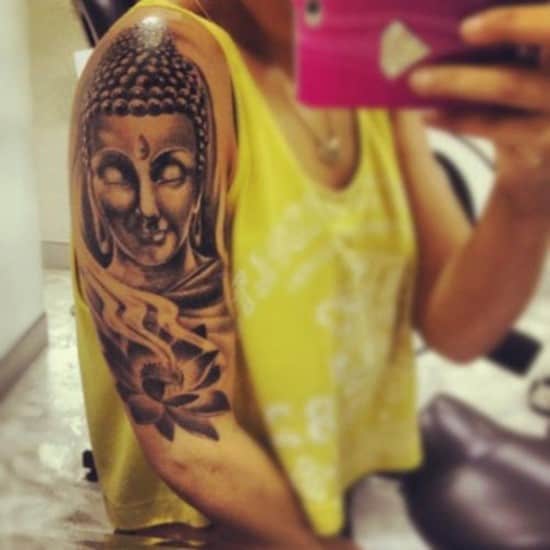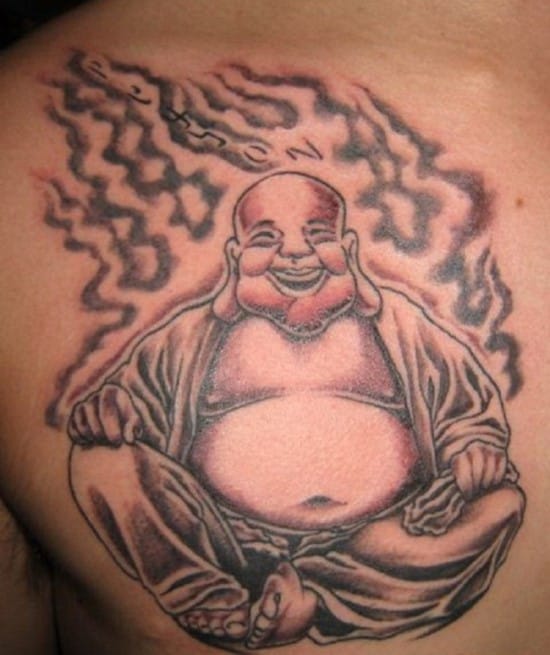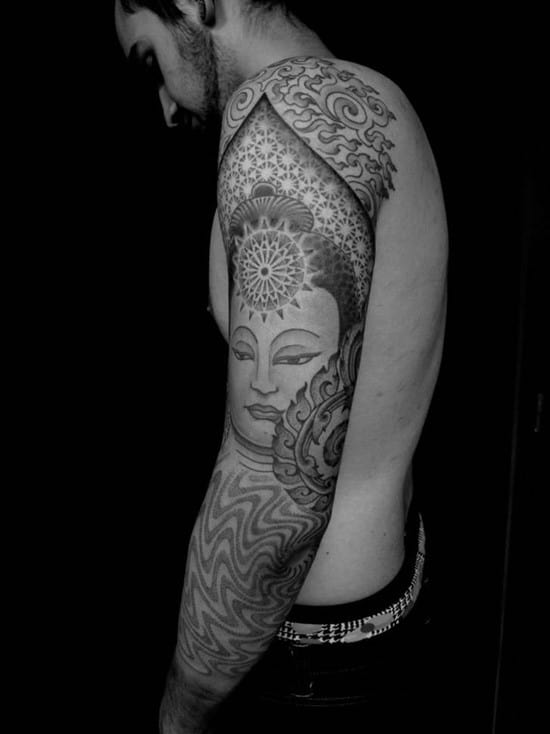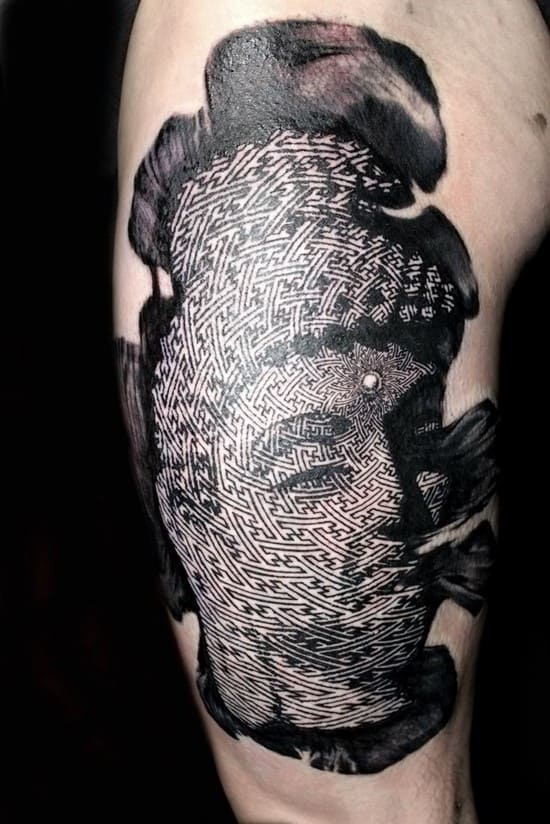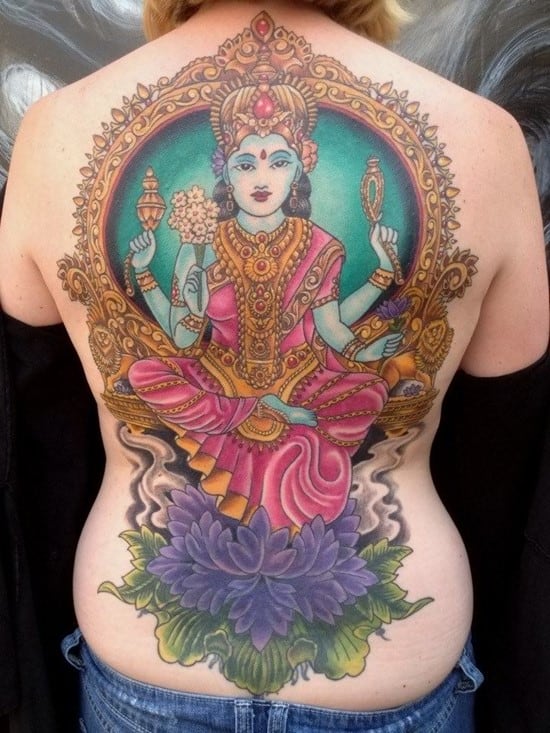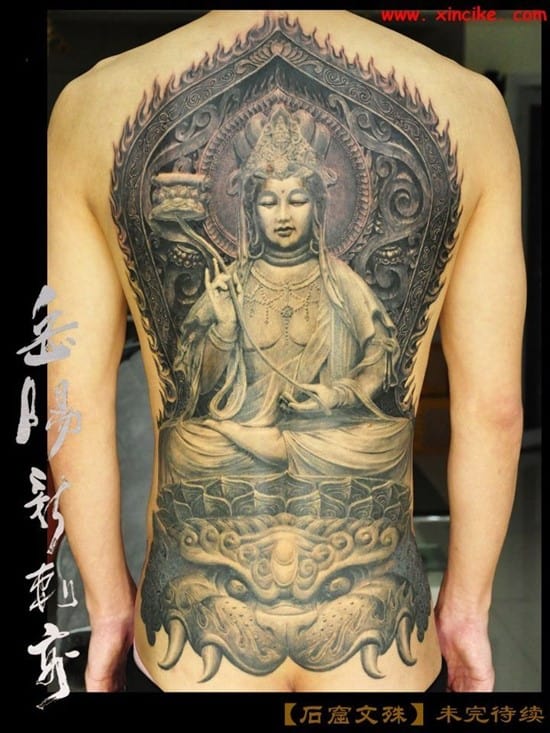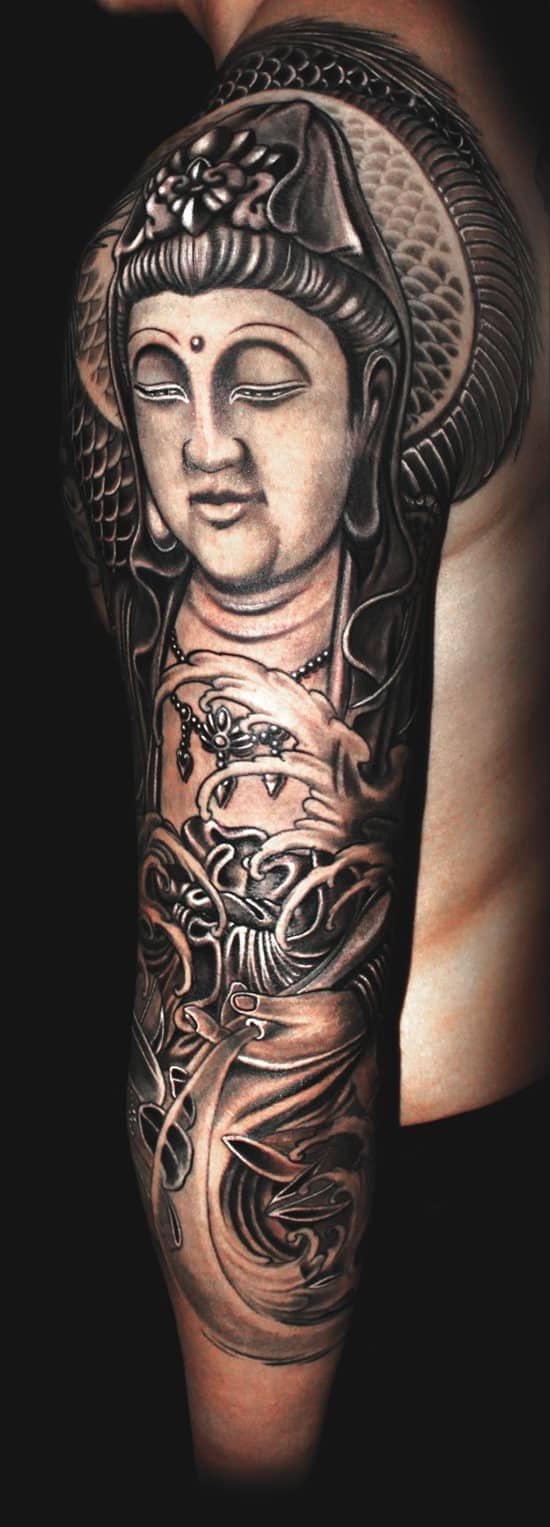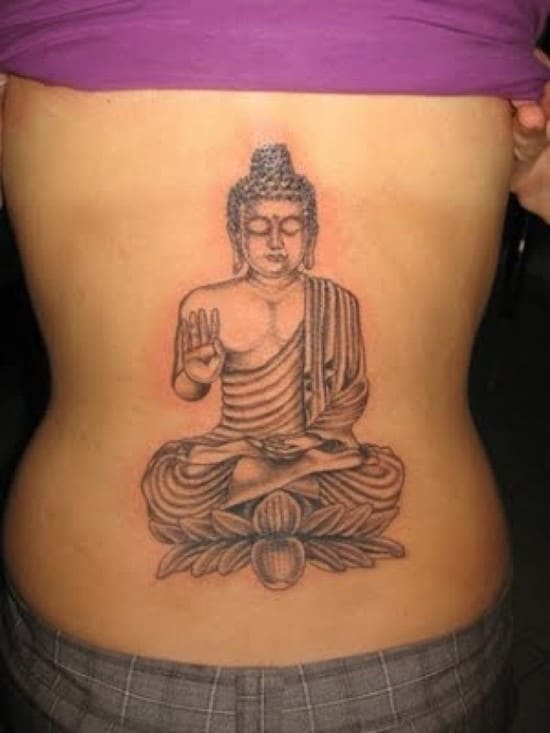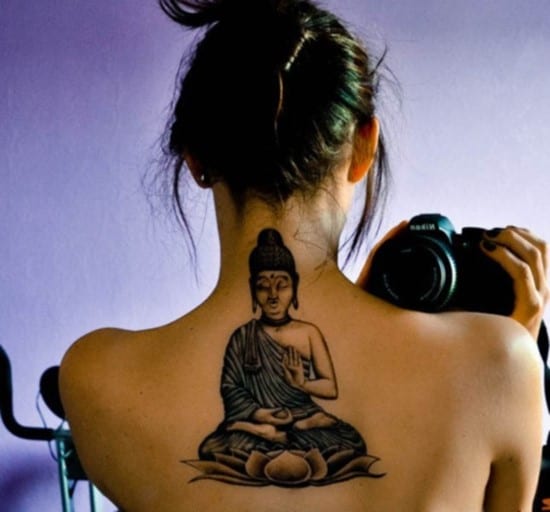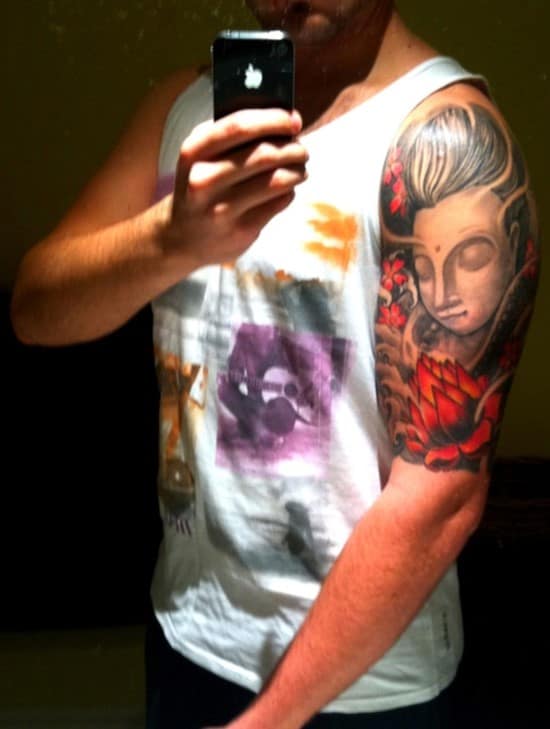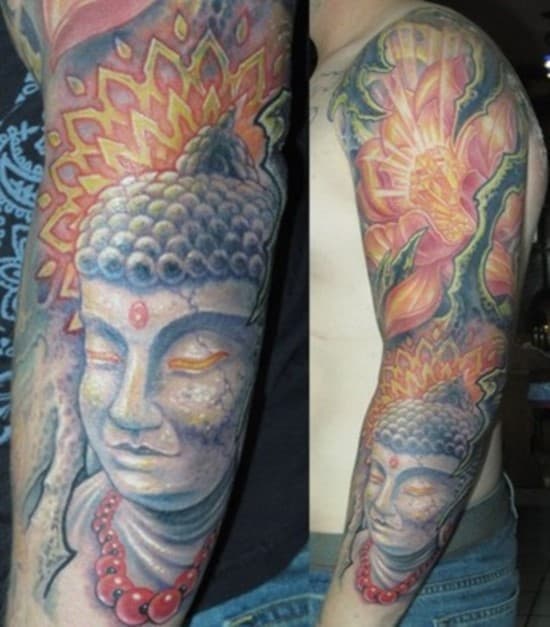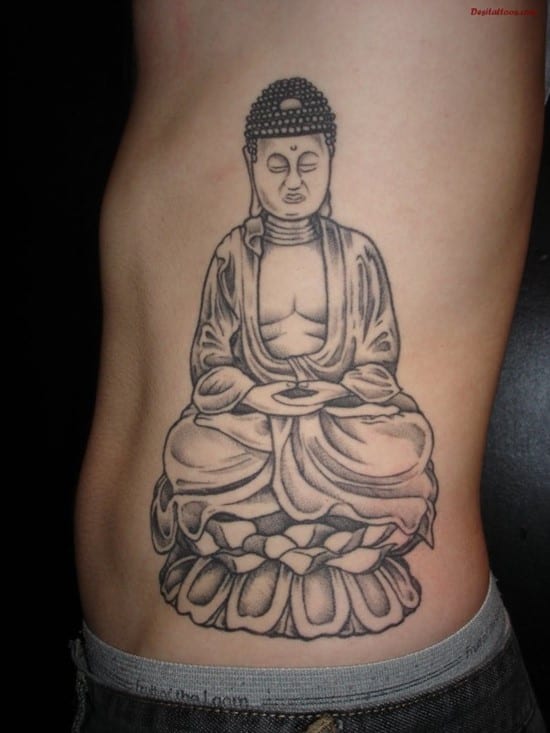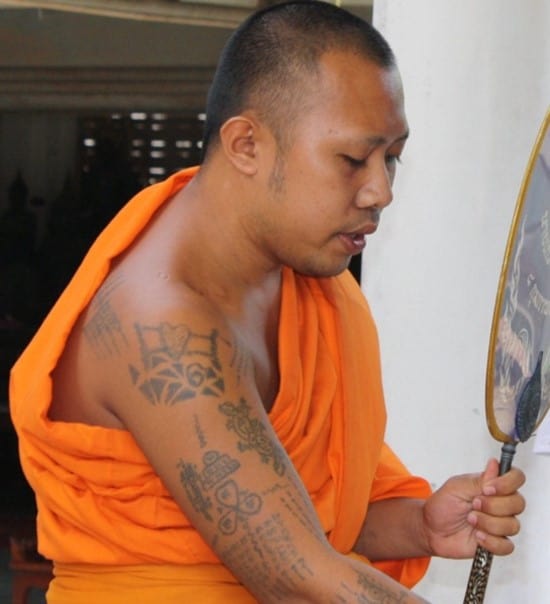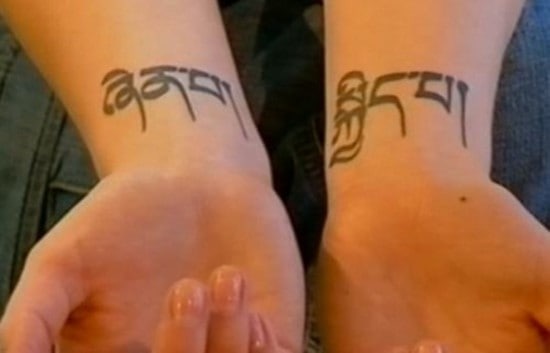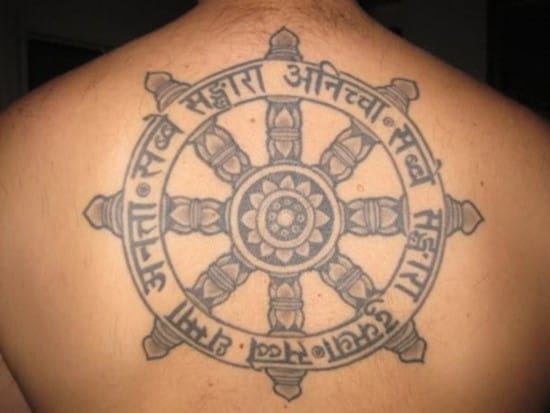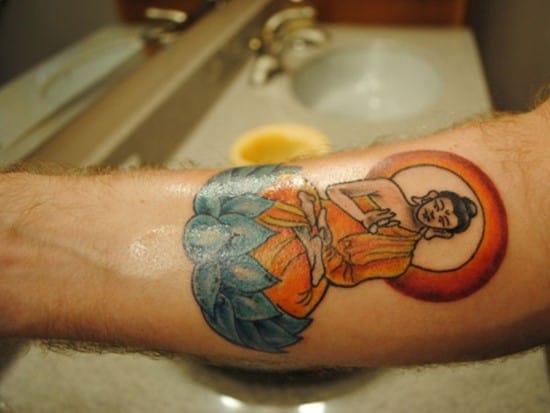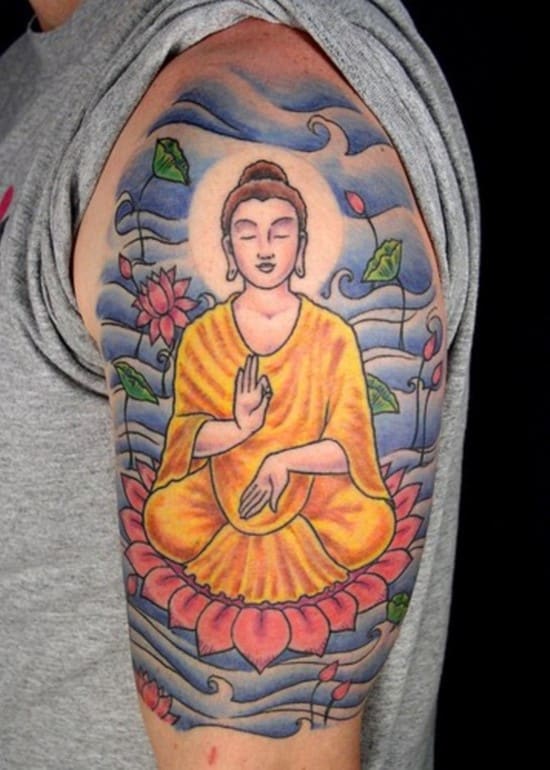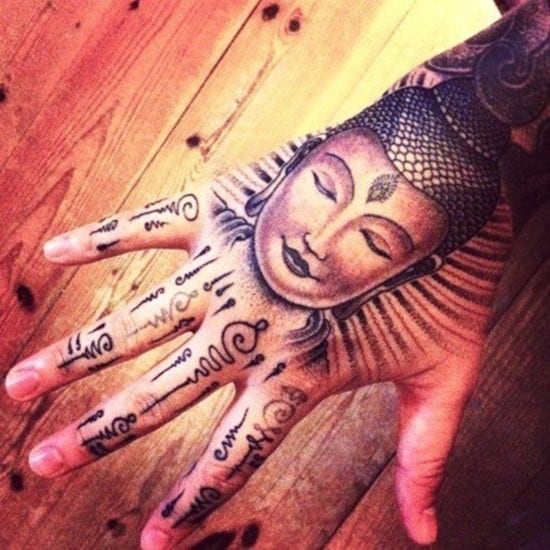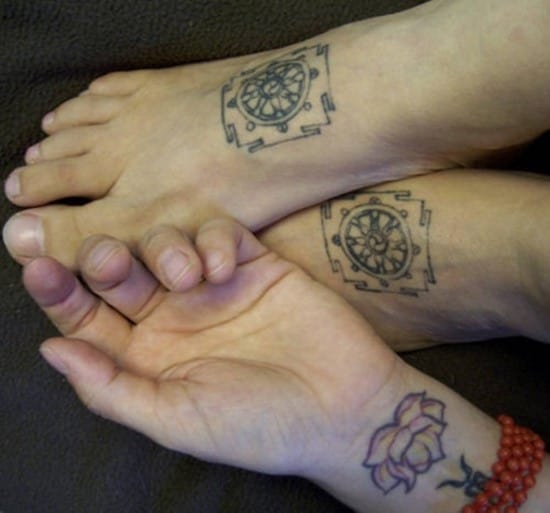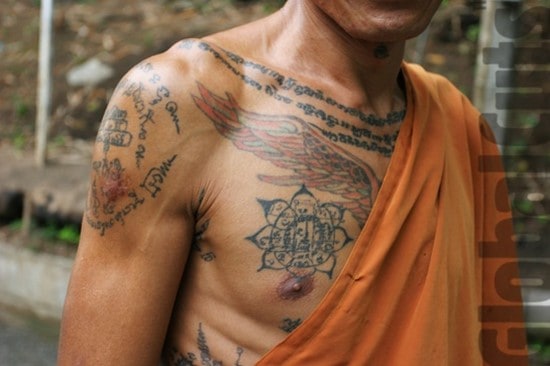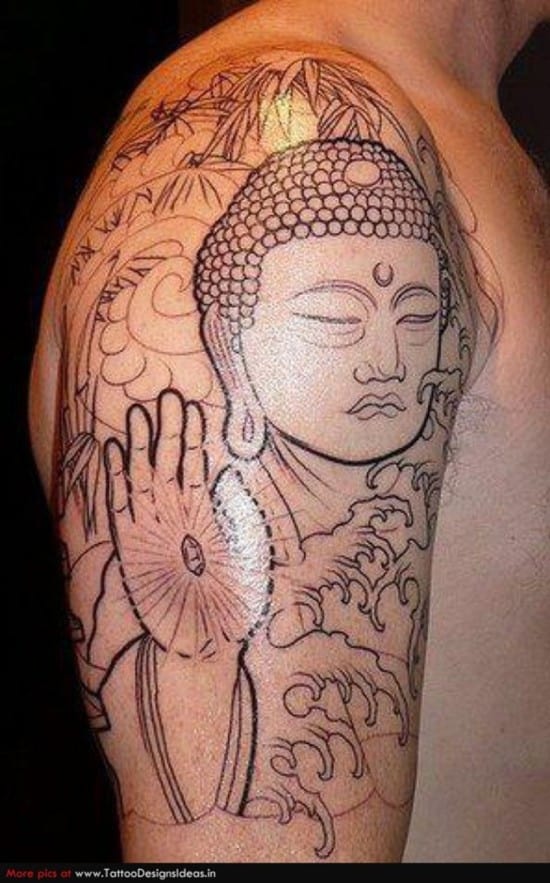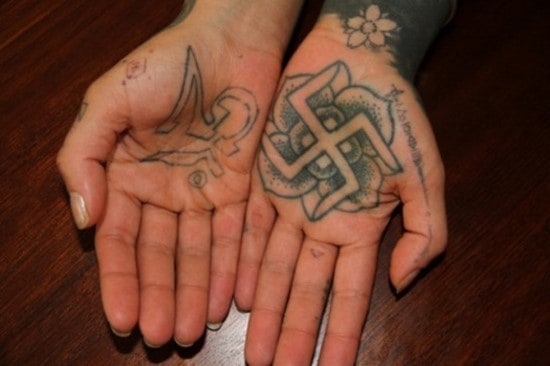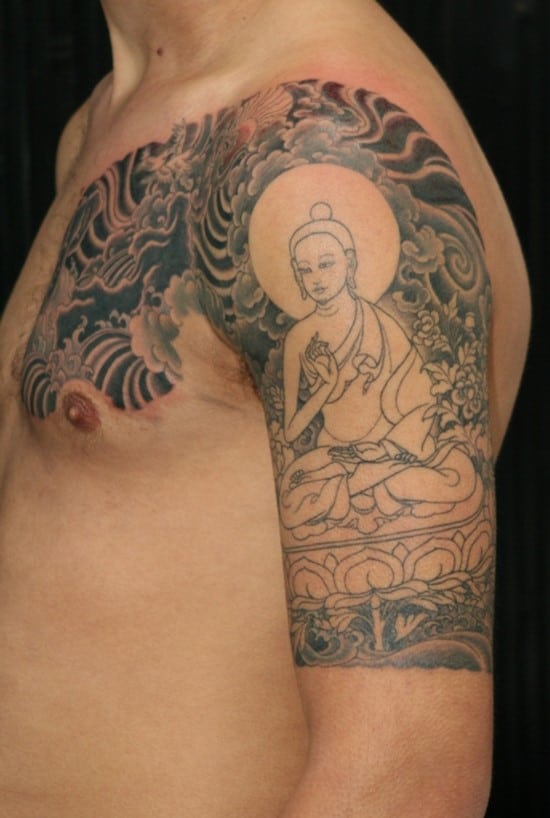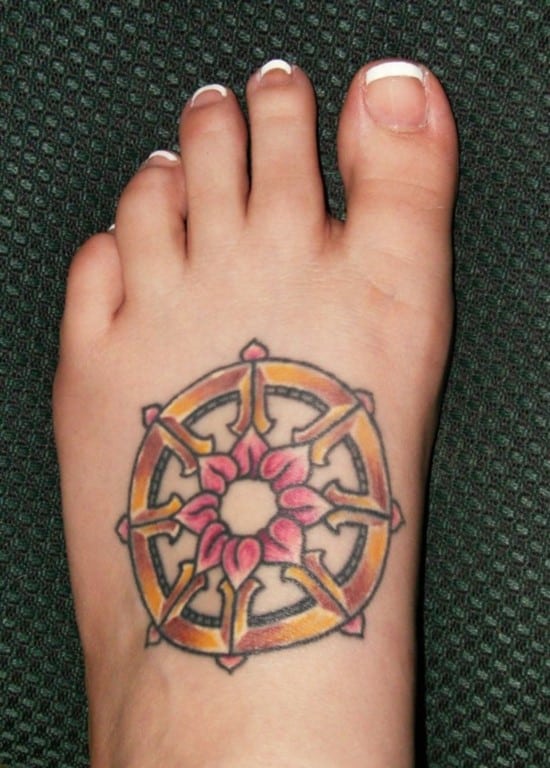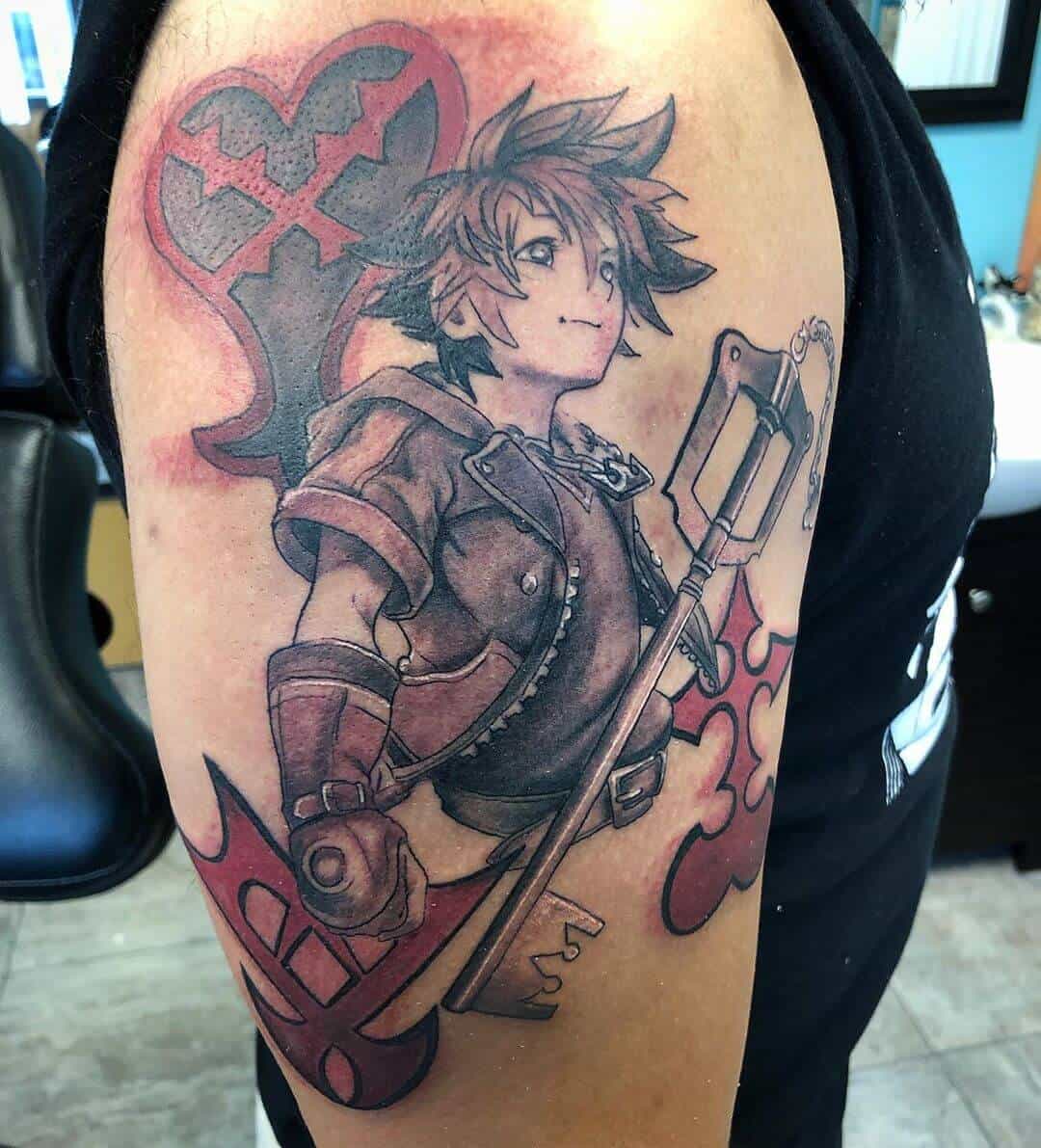As well as looking great, tattoos are an excellent way to express your values and priorities, including religious or spiritual beliefs.
Among spiritual tattoos, Buddhist symbols are particularly popular – and not only among the followers of the Buddhist religion.
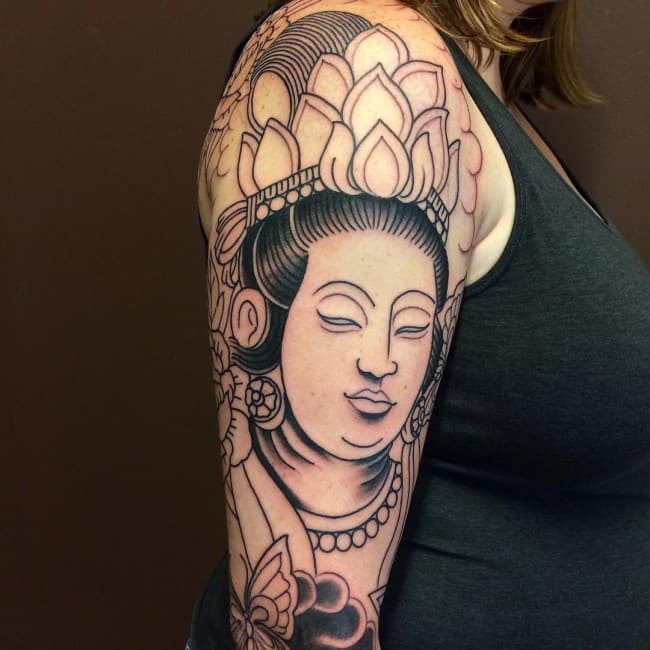
Buddha as a historical and religious figure
Gautama Buddha was a monk, philosopher, and teacher, who lived sometime between the 6th and 4th centuries BCE.
It is on his teachings that Buddhism was founded, and as such he is the most important figure in the religion.
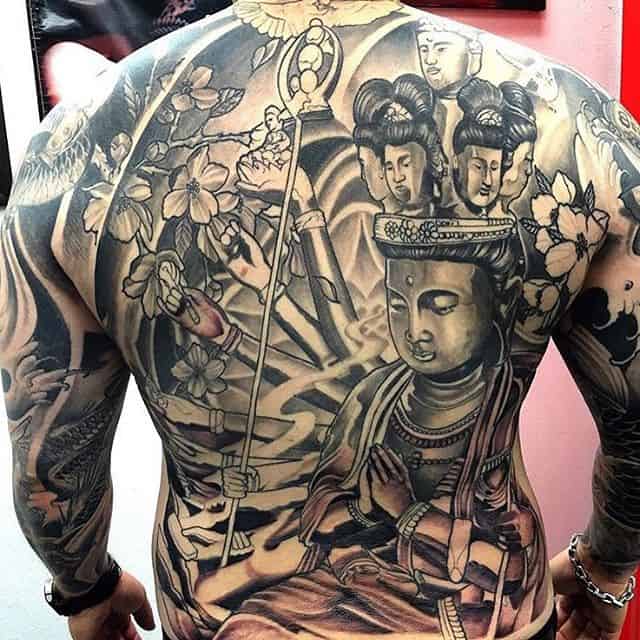
Buddha was allegedly born a prince but realized that riches and earthly possessions could not bring happiness or protect a person from suffering.
Through meditation, he is believed to have reached enlightenment and found lasting happiness and inner peace.
He then shared the wisdom he found with others, aiming to teach them how to reach the same state.
Recommended Reading: Don’t miss our guide to mandala tattoos next!
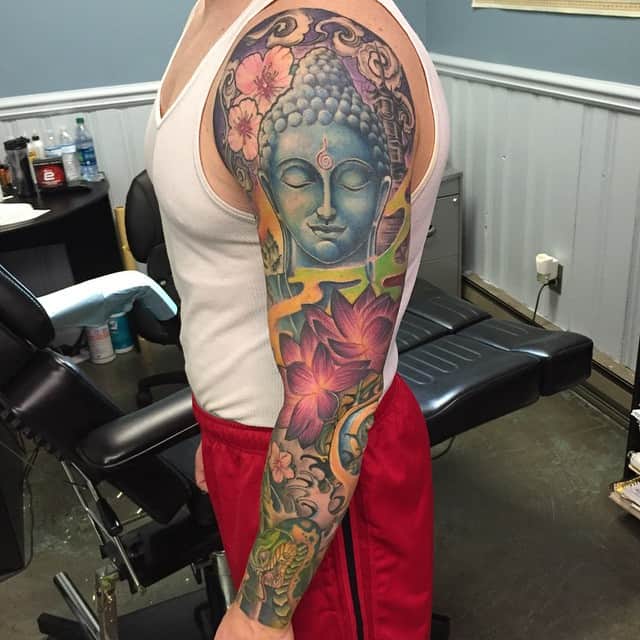
Buddhist beliefs
To understand the meaning of Buddha based tattoos, it’s necessary to first become familiar with the principles of Buddhism.
All forms of Buddhism are based in what’s known as the ‘four noble truths’:
- Dukha – existence is suffering
- Trishna – suffering has a cause (attachment and craving)
- Nirvana – the end of suffering
- The Eightfold Path – the way to achieve the end of suffering, through the right views, right resolve, right speech, right action, right livelihood, right effort, right mindfulness, and right concentration
Buddhists believe in reincarnation or a cycle of death and rebirth. Through living in a mindful way that follows the Eightfold Path, they hope to achieve enlightenment and escape this cycle, ending the suffering of continual existence.
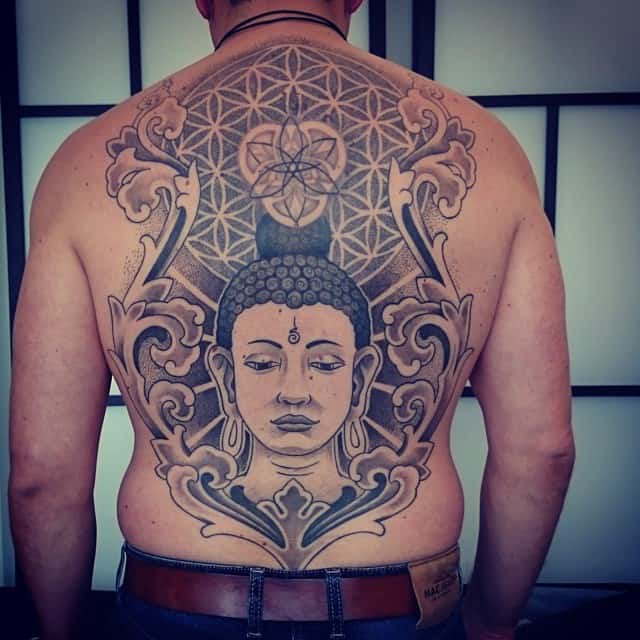
Buddhist virtues, or the core values of the religion and its followers, include compassion, loving kindness, empathetic joy, and equanimity (accepting good and bad events and experiences with equal calm).
Buddhists disapprove of anger and hatred, greed and attachment, and ignorance.
Naturally, there’s much more to Buddhism than this. As with most religions, Buddhism is a complex and broad set of beliefs and practices that is impossible to summarize completely in just a few sentences.
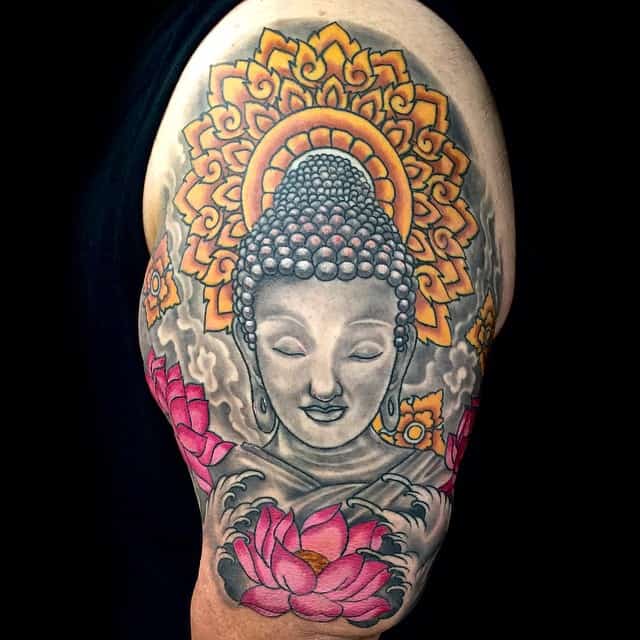
If you’re interested in Buddhist tattoos but not entirely familiar with the religion itself, it might be a good idea to do some further research to make sure your choice of tattoo will be fully in line with your personal views and beliefs.
Recommended Article: We cover memorial tattoos in this guide.
Buddha tattoo design ideas
Perhaps surprisingly, Buddha symbol tattoos come in a range of styles and variations. Popular choices include:
- Buddha and lotus flower – the lotus flower is an important symbol in Buddhism, so it makes sense that the two elements are often combined for cohesive and great-looking designs. Buddhist mythology states that Buddha himself was born from a white lotus, while the eight petals of the flower are supposed to represent the Eightfold Path. In general, the lotus is a symbol of fortune and enlightenment in Buddhism – the flower grows in muddy water, yet it rises above its unclean environment, blooming in a beautiful and pure way. For tattoo designs, popular ideas include an image of Buddha meditating atop a blooming lotus flower or the face of Buddha in the middle of a lotus.
- 3D Buddha – this type of design usually involves a hyper-realistic image of a statue of Buddha, drawing on the traditional style of sculpture found in Buddhist temples and places of prayer.
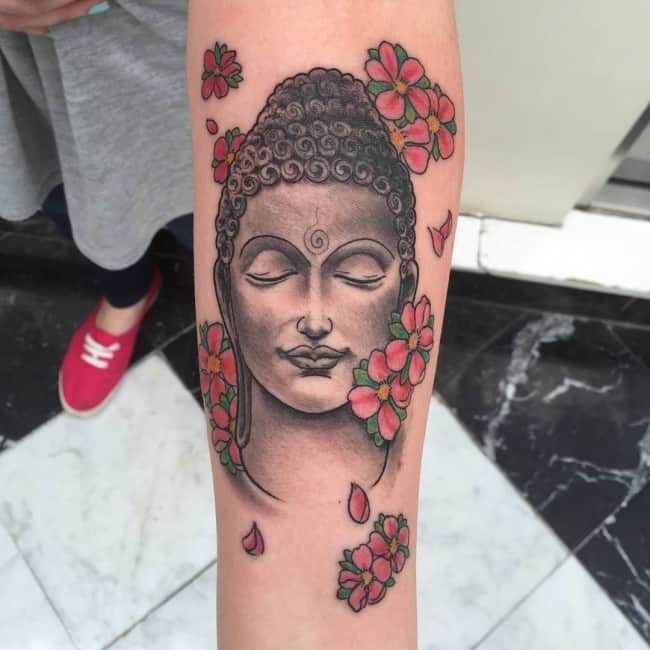
- Sitting Buddha – both in tattoo art and elsewhere, it’s common to depict Buddha sitting cross-legged (in what’s known as the lotus pose), apparently in meditation – again drawing on traditional statues. Not everyone knows that the details of the posture and gestures of Buddha in such statues have their own meaning. For instance, a seated Buddha with the right hand raised is associated with protection, while a meditating Buddha with both hands in the lap is considered to mean calm and serenity.
- The face of Buddha – another popular variation is a design including Buddha’s face, with his eyes closed or half-closed in meditation and a peaceful expression. This image is often combined with other elements, such as the lotus or abstract floral patterns.
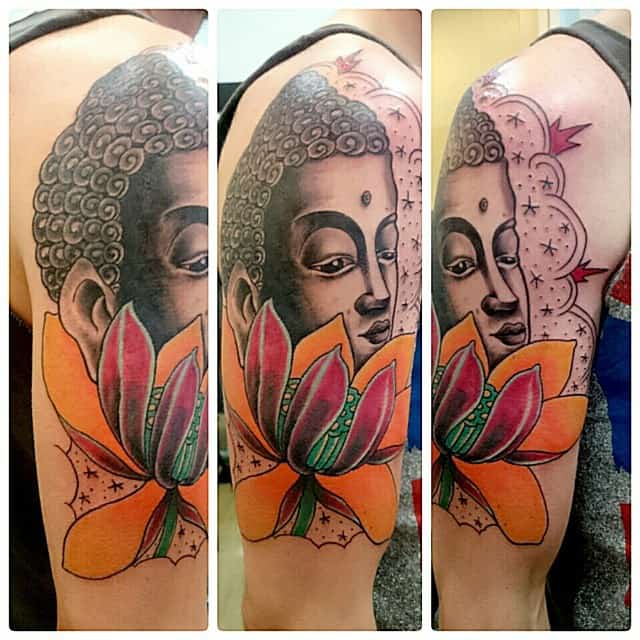
- Laughing Buddha – in contrast to the serious, peaceful, thin Gautama Buddha, the laughing Buddha is shown as a bald, fat, joyous figure with a round stomach. There is a common misconception in Western cultures that this is just another way to represent the ‘true’ Buddha. In fact, the Laughing Buddha comes from Chinese Buddhist stories and is a representation of Ch’i-t’zu, an eccentric and amusing Ch’an monk – he is therefore not the same figure as Gautama Buddha. The Laughing Buddha is believed to bring happiness and prosperity, and be a protector of children. In tattoo designs, he is often depicted using a traditional tattoo style – with a black outline, solid-color fill, and cartoon-like appearance.
Since a Buddha symbol tattoo will have religious or spiritual implications not only to you but also to others who see the design on your skin, it’s good to carefully consider whether your chosen tattoo is appropriate.
Representing spiritual imagery such as a symbol of Buddha in a disrespectful way could cause offense to some people.
Recommended: Don’t miss our guide to dove tattoos!

Placement
Though it’s possible to create a minimalistic Buddha design that will be suitable for a small space, most Buddhist tattoo designs will be at least medium-sized.
Your shoulders, torso, and stomach are all ideal placements for medium tattoos, as are your arms. Buddhist-themed sleeves and half-sleeves are a great choice.
If you’re considering a Buddha tattoo, be advised that placing it anywhere below the waist (such as on your legs) may be considered offensive by Buddhists.
A key part of the Buddhist religion is separating oneself from the attachments of this world, such as material possessions – and our legs are the parts of our bodies connecting us to earth.
When placing images of Buddha in their homes, devout Buddhists will put the image in the highest possible place as a sign of respect. For these reasons, some Buddhists will see a tattoo of Buddha on your thigh, leg, or foot as highly disrespectful.
This is not to say that all Buddha-themed tattoos are likely to cause offense – as long as they’re placed above the waist and represent Buddha in an appropriate way, you have nothing to worry about.
Recommended: Check out our guide to koi fish tattoos next!
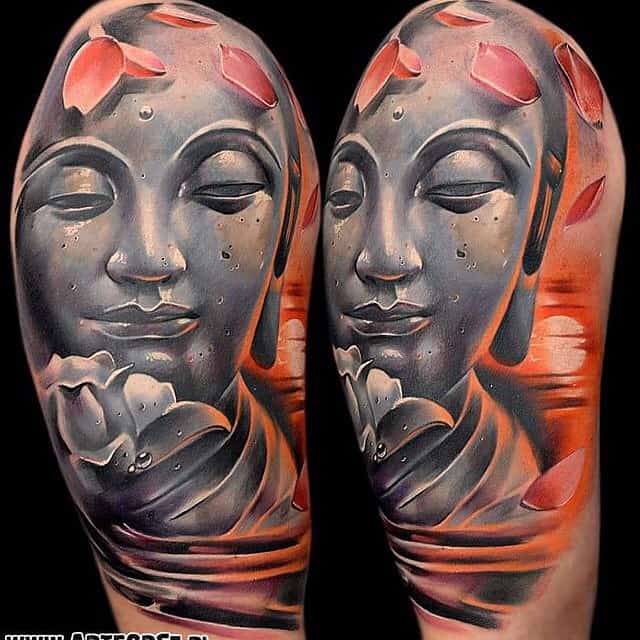
Final words
Buddhist tattoos can be a great way to express your spiritual beliefs and remind you of their importance.
When done appropriately and with a good amount of consideration, they can serve as a lasting testament to your principles and a source of inspiration and spiritual strength.
For more ideas and designs, check out our massive gallery of Buddha tattoos below!
